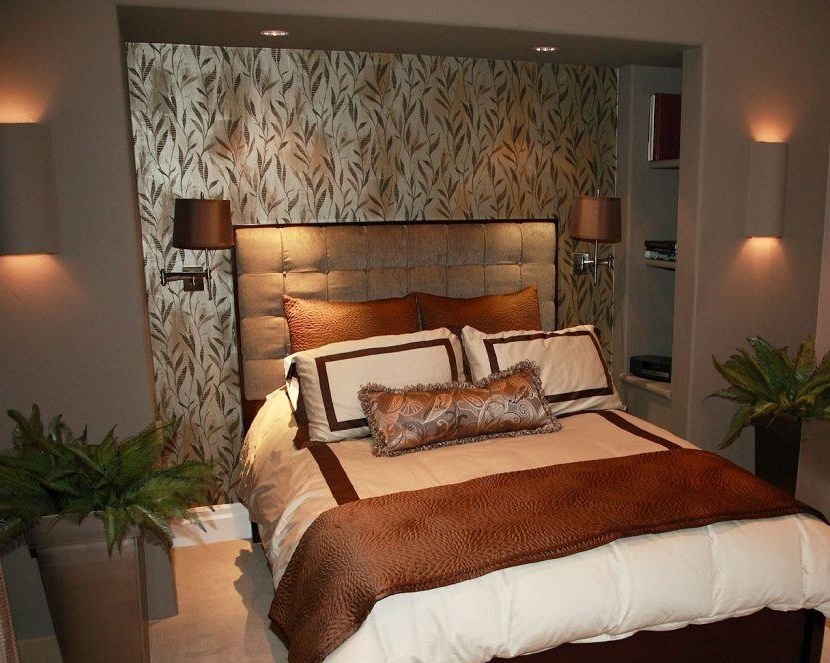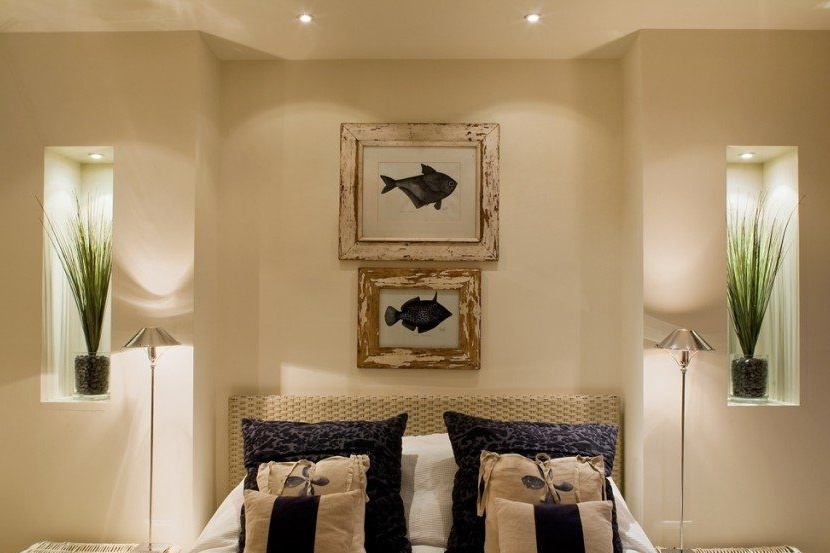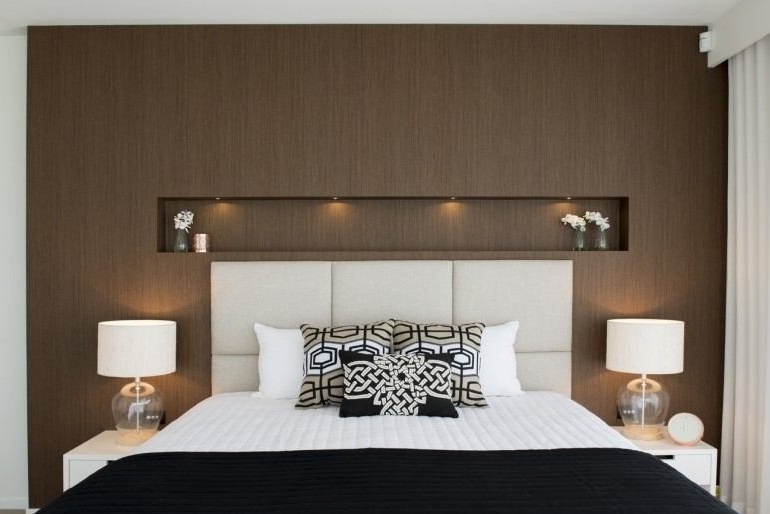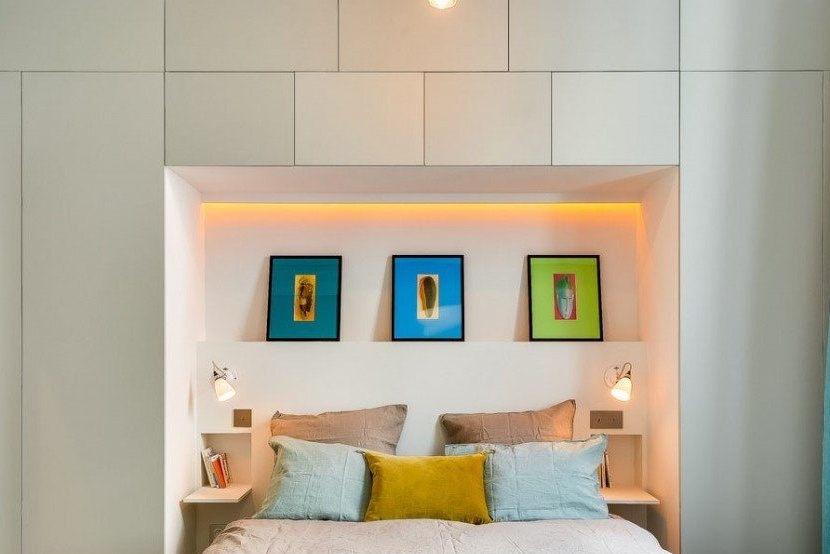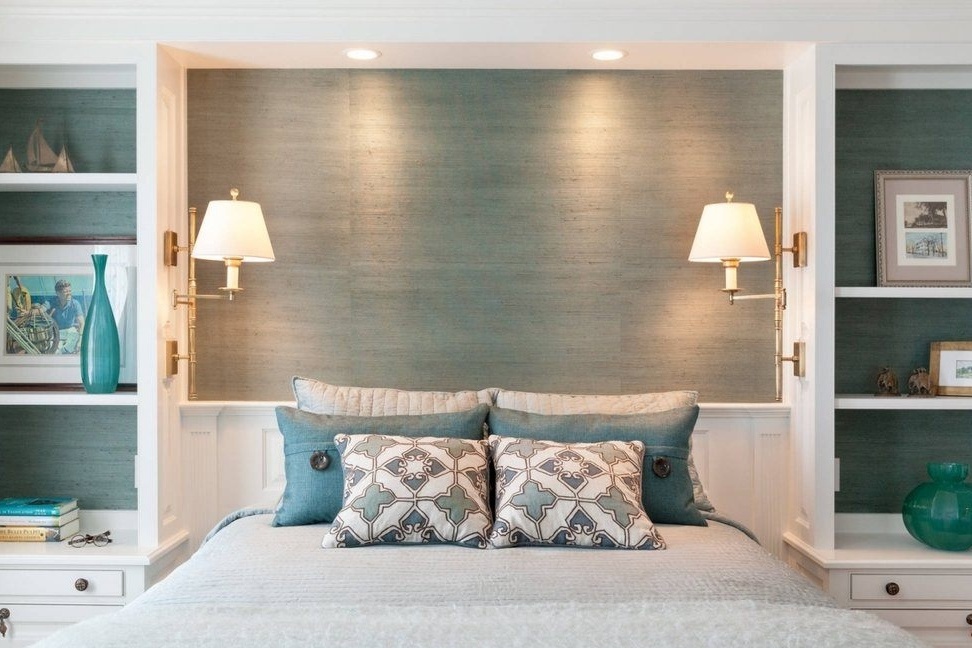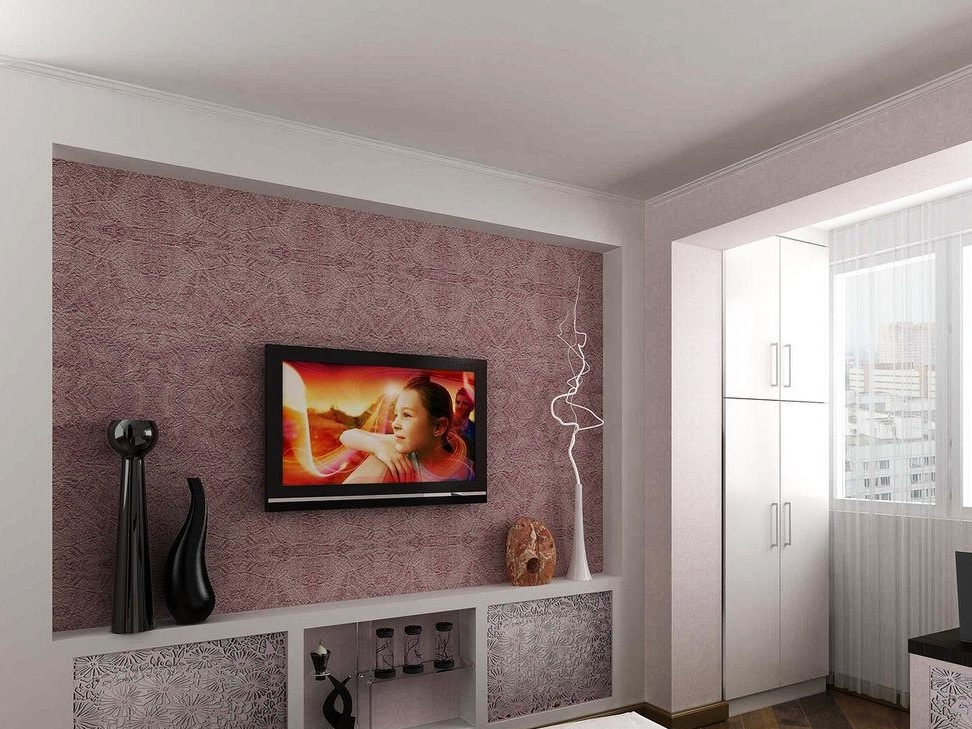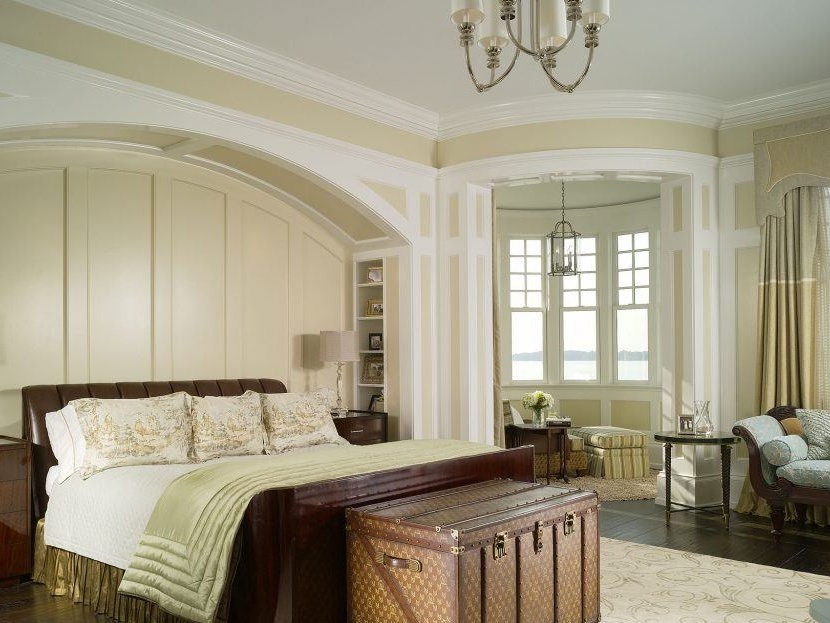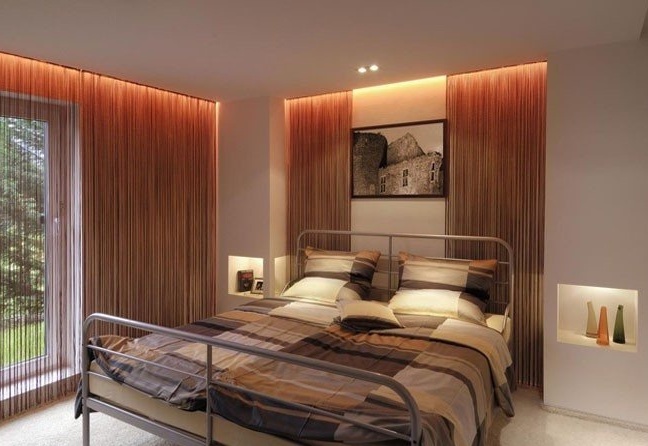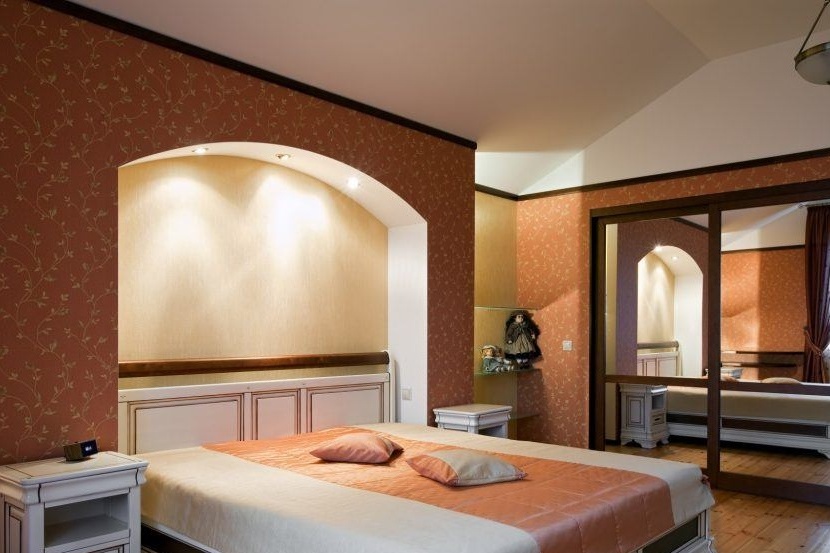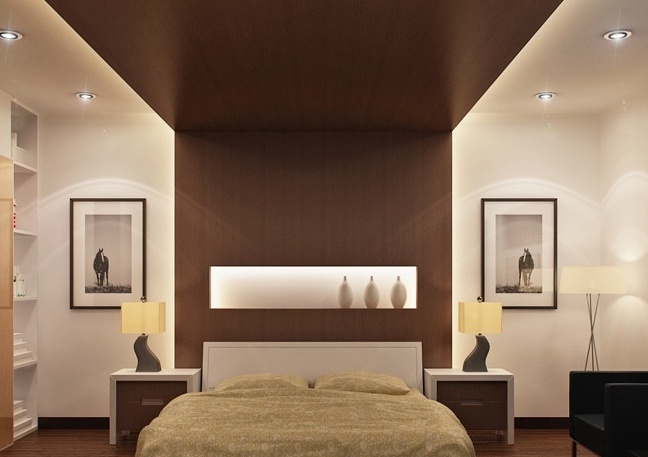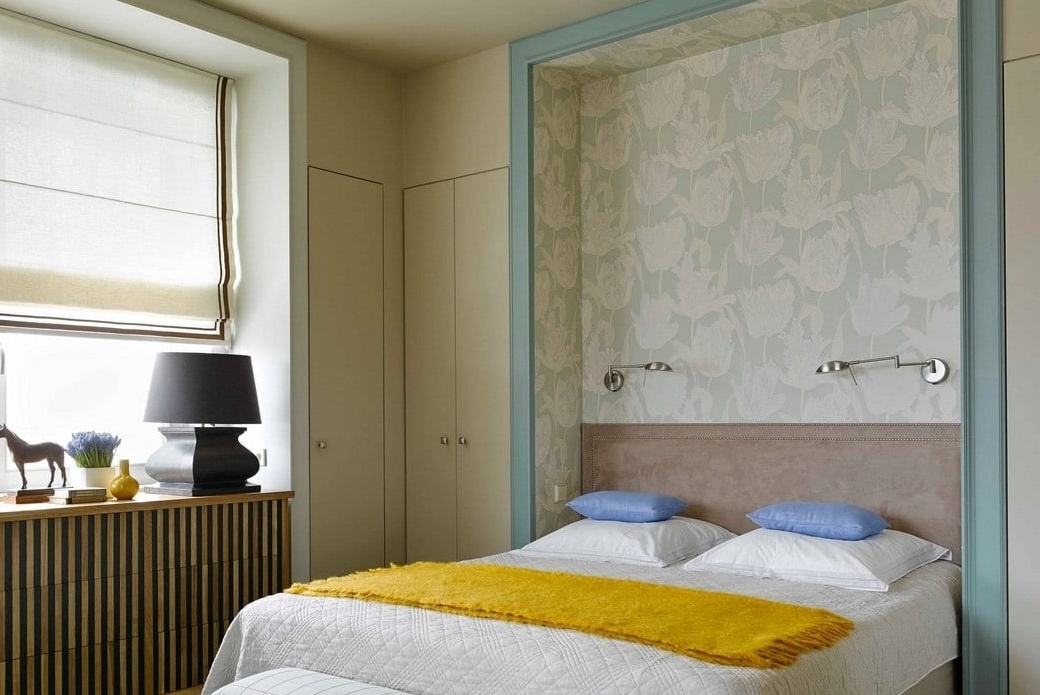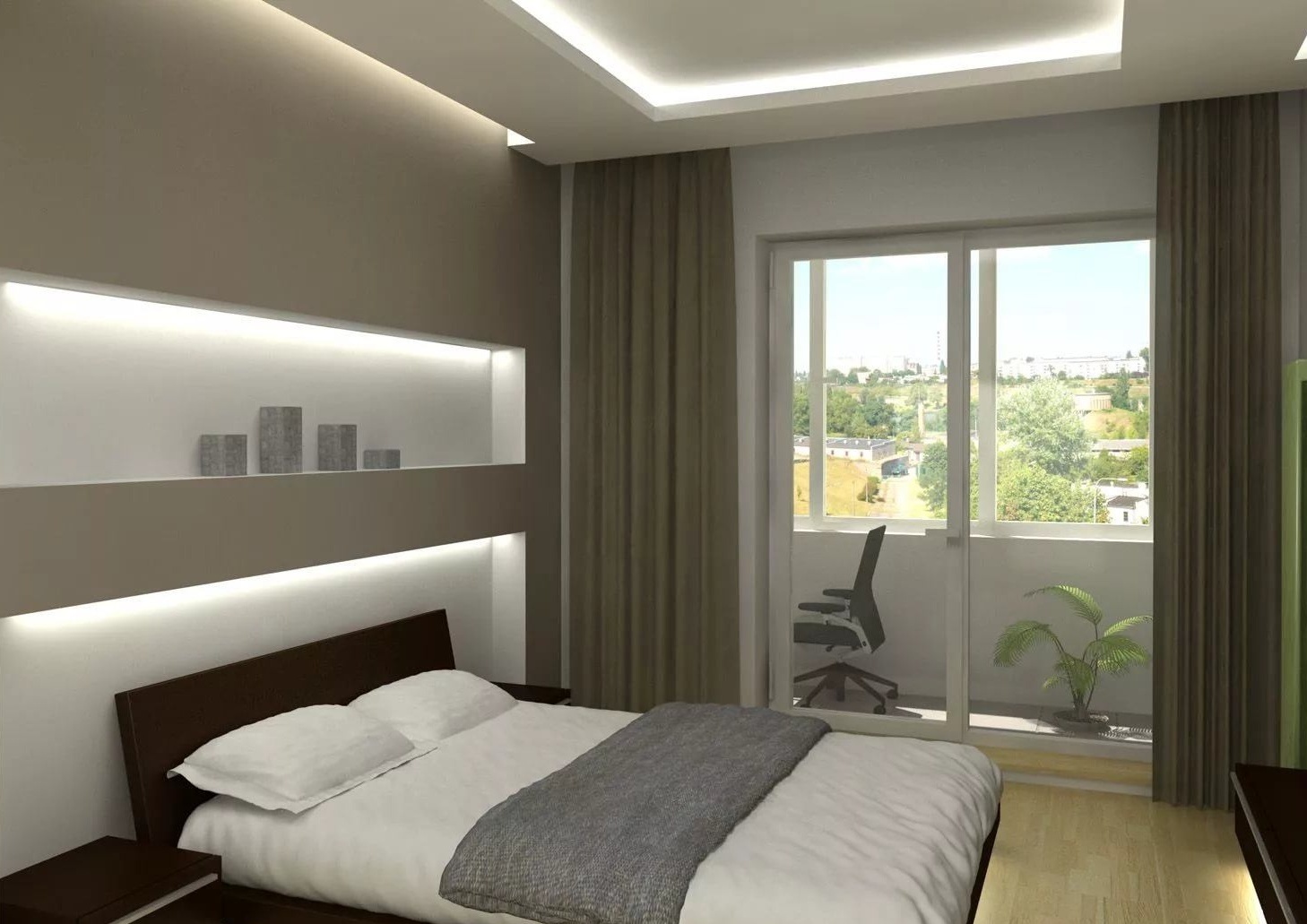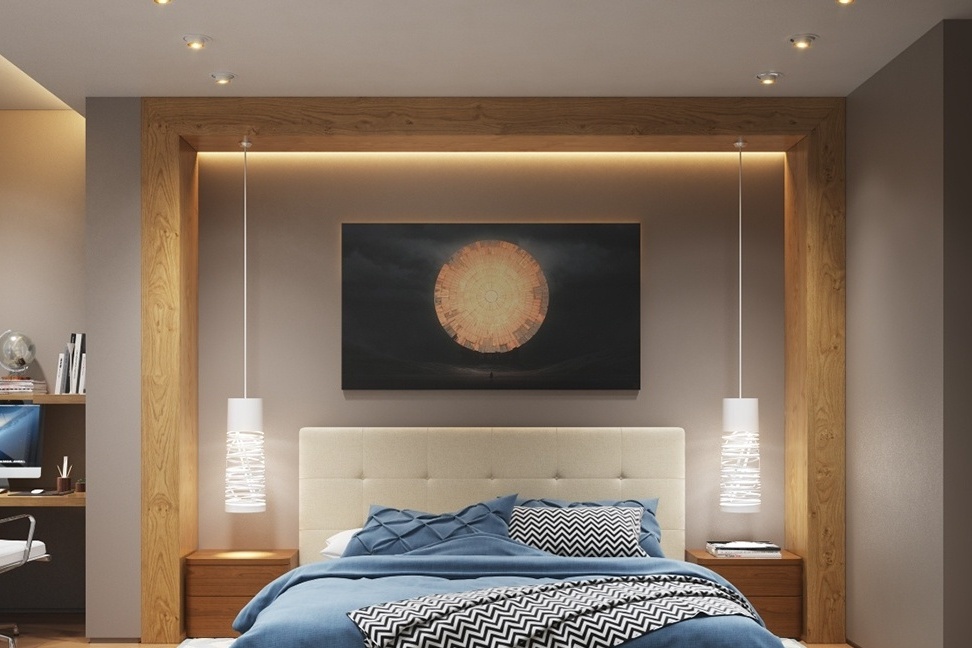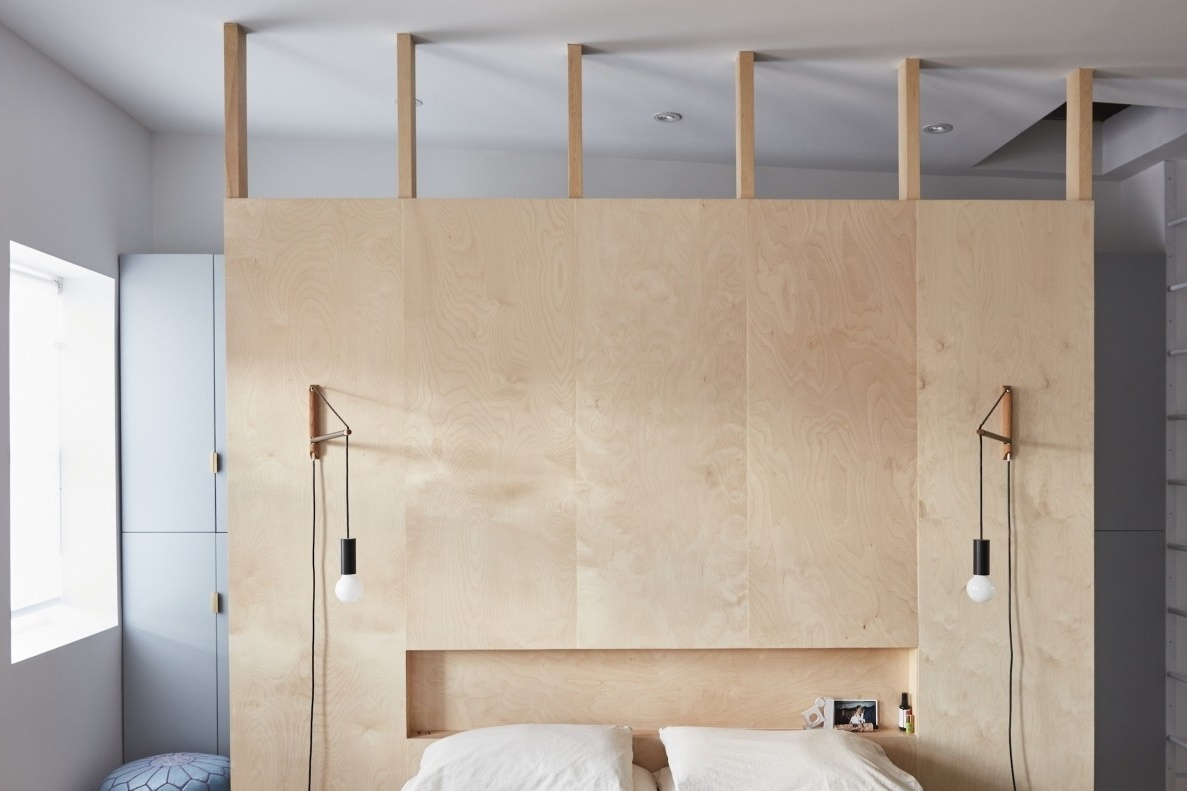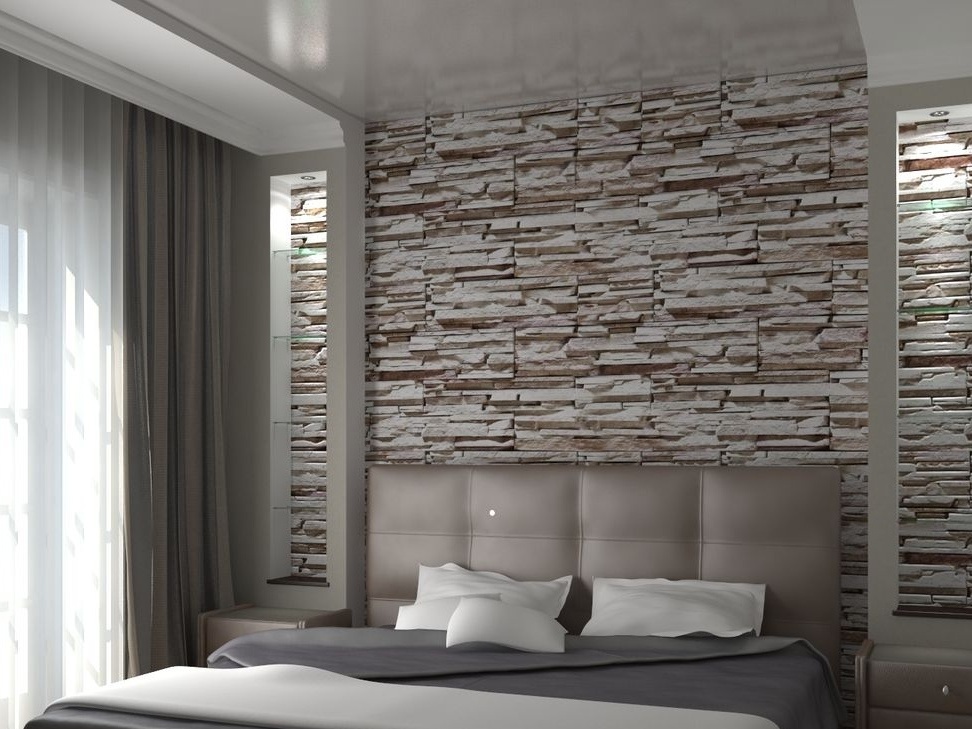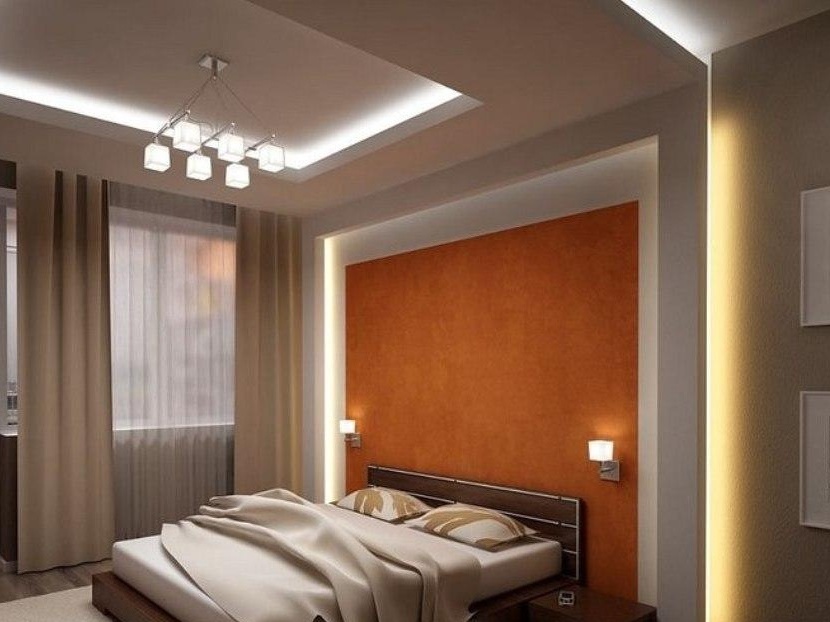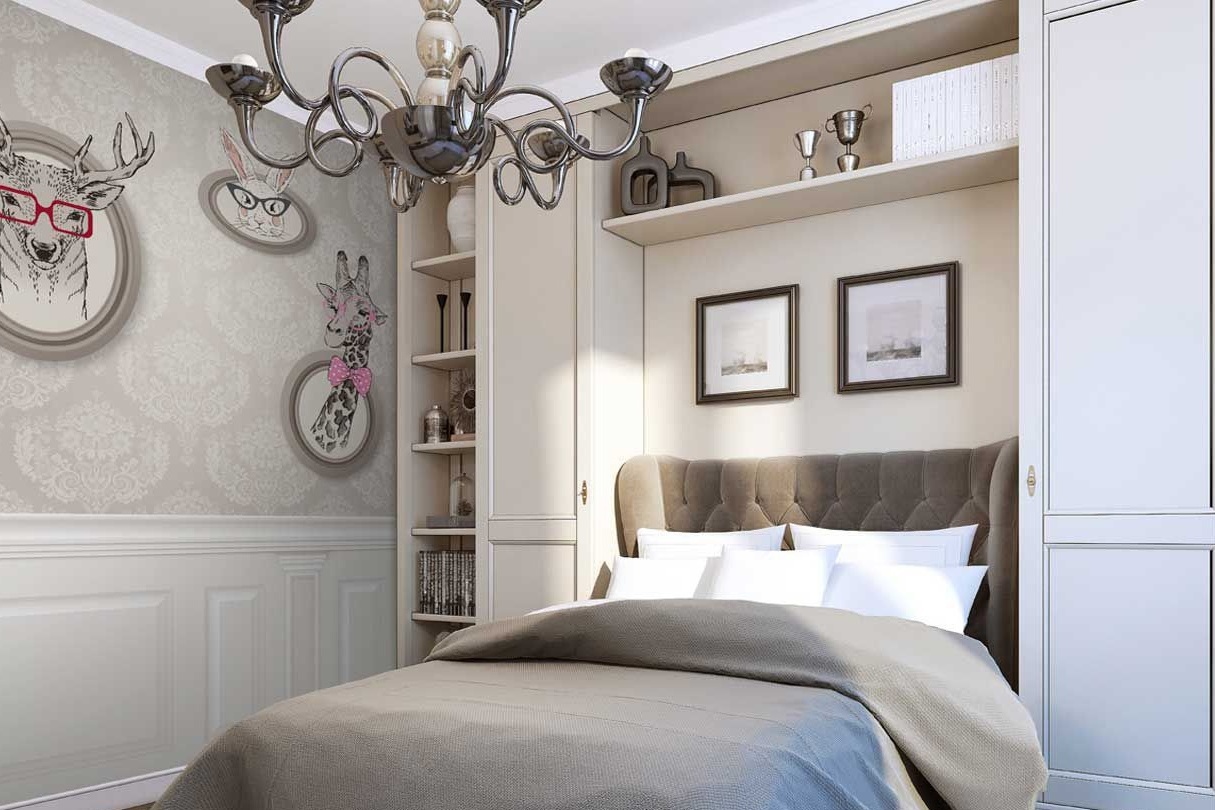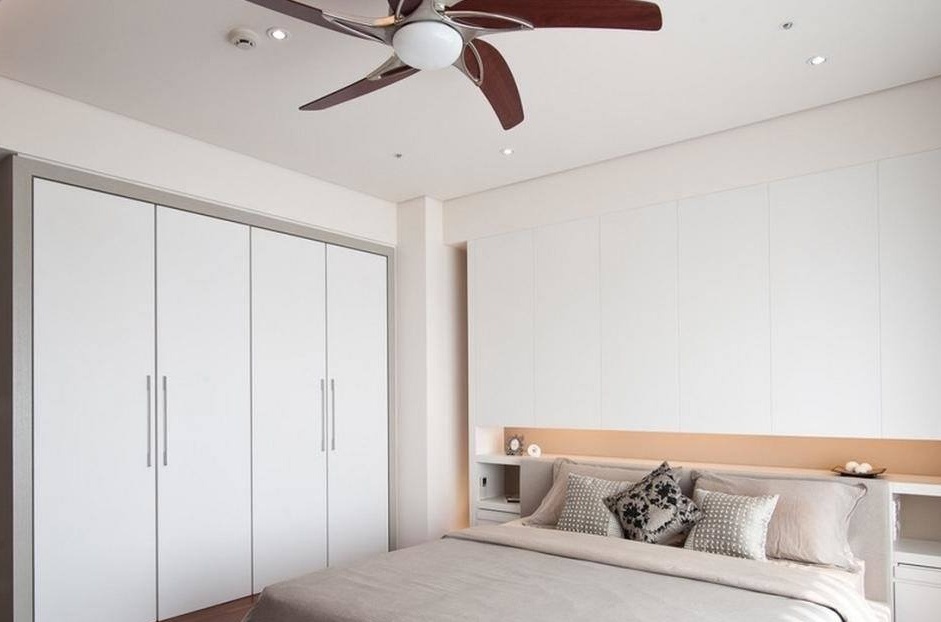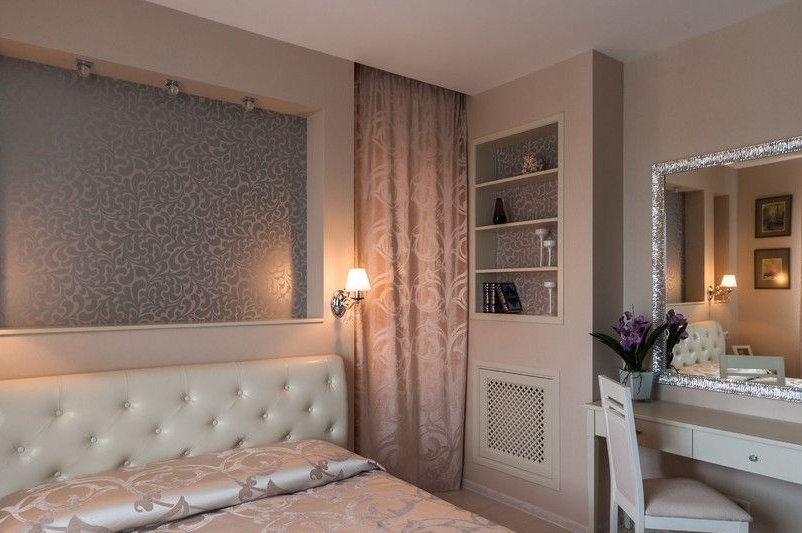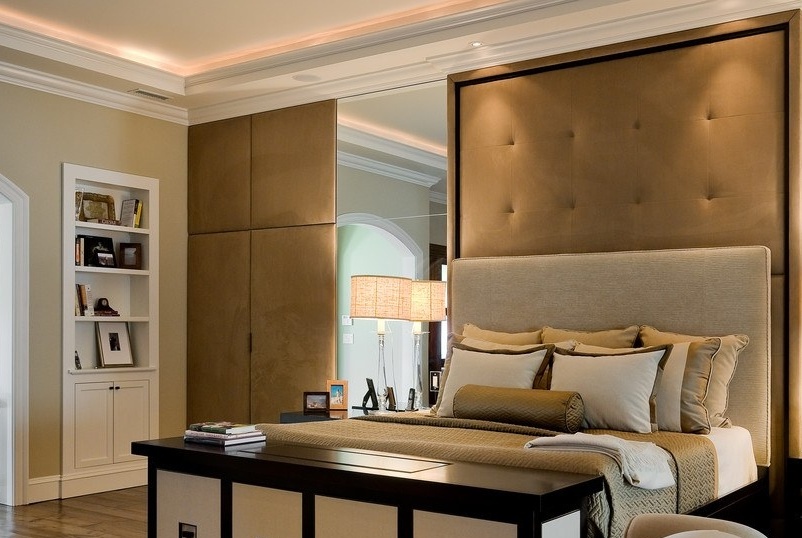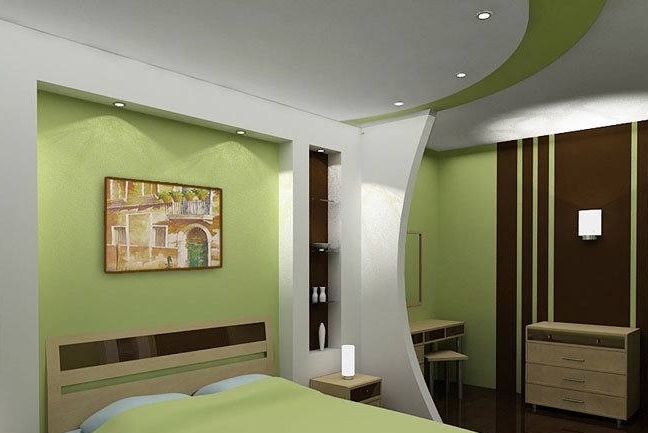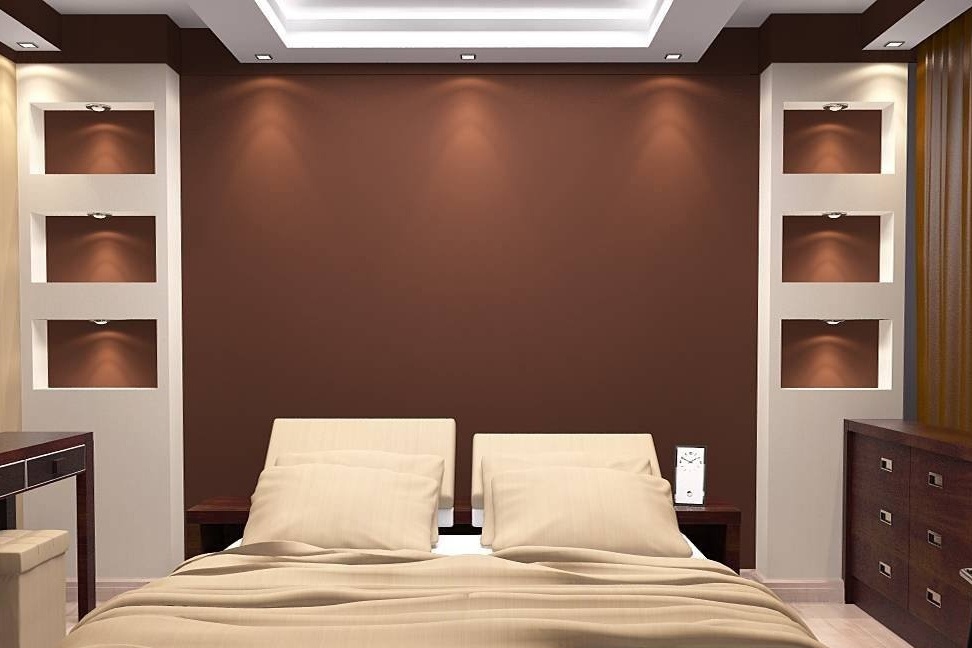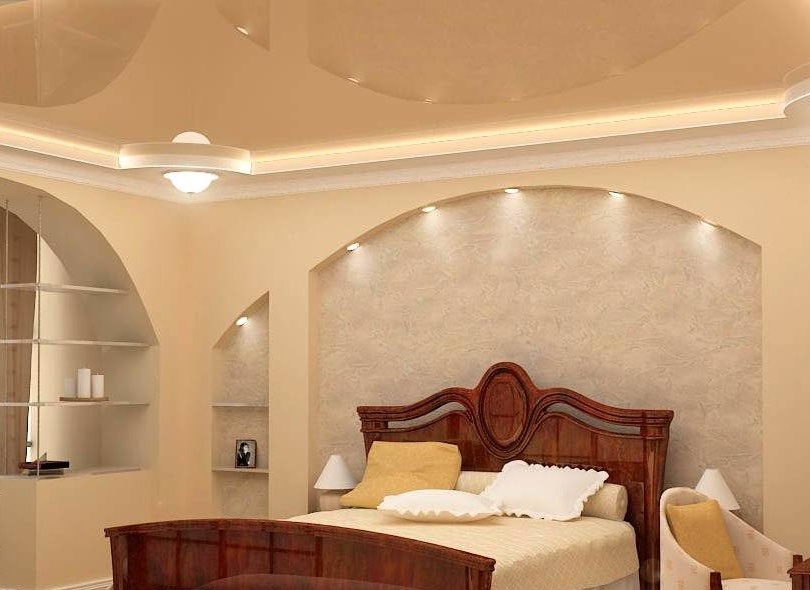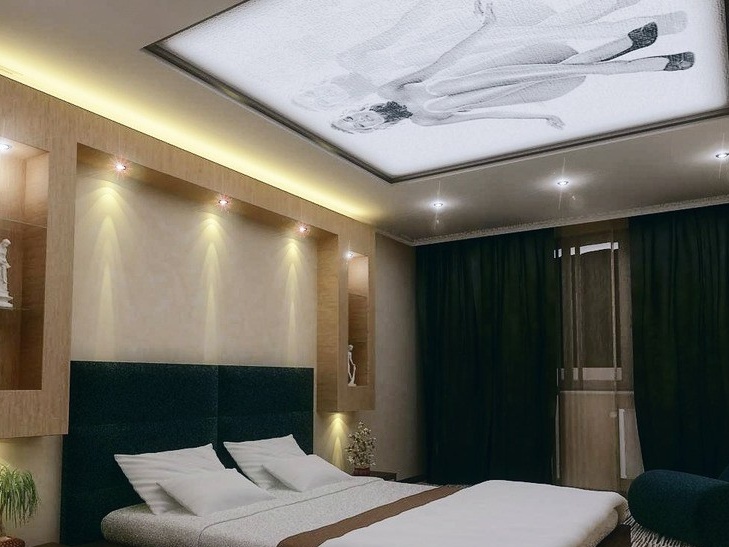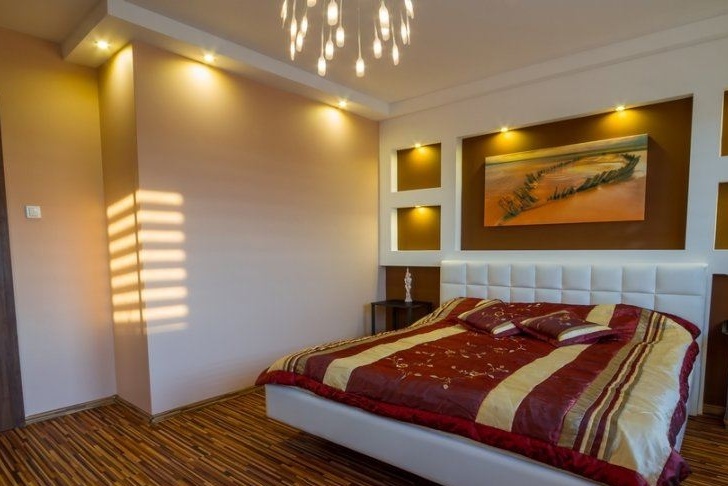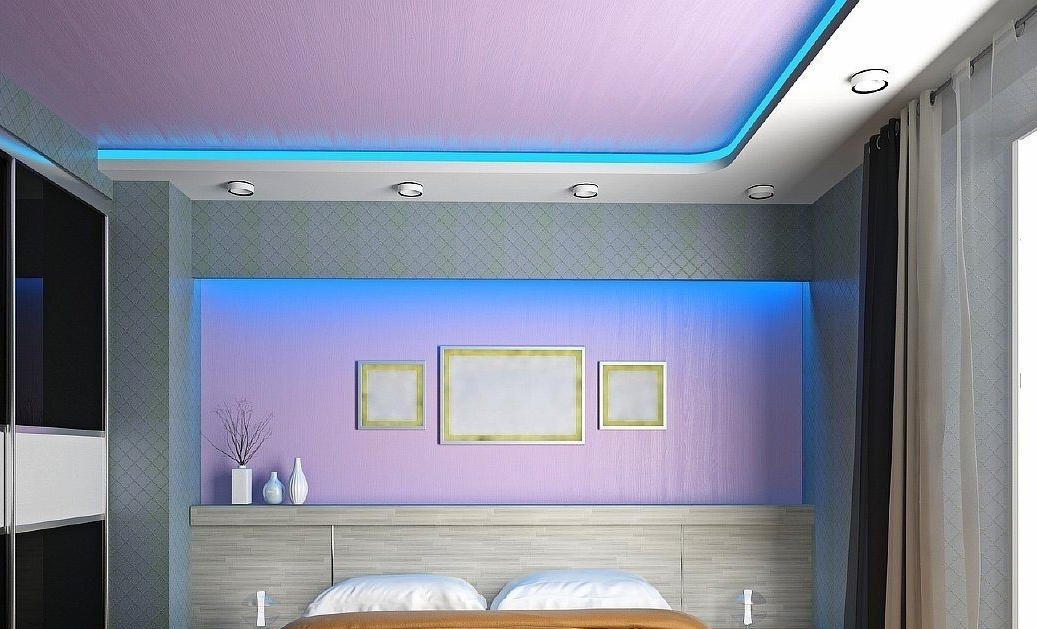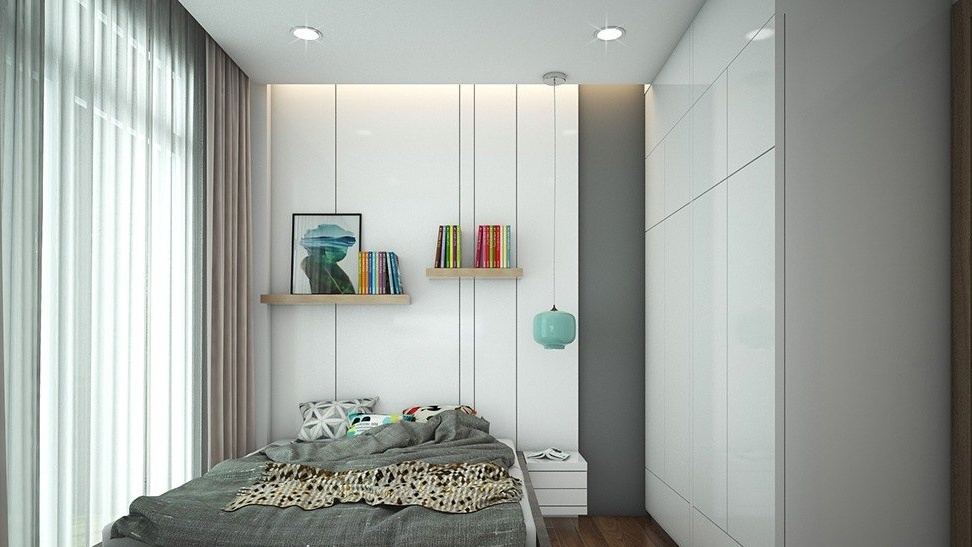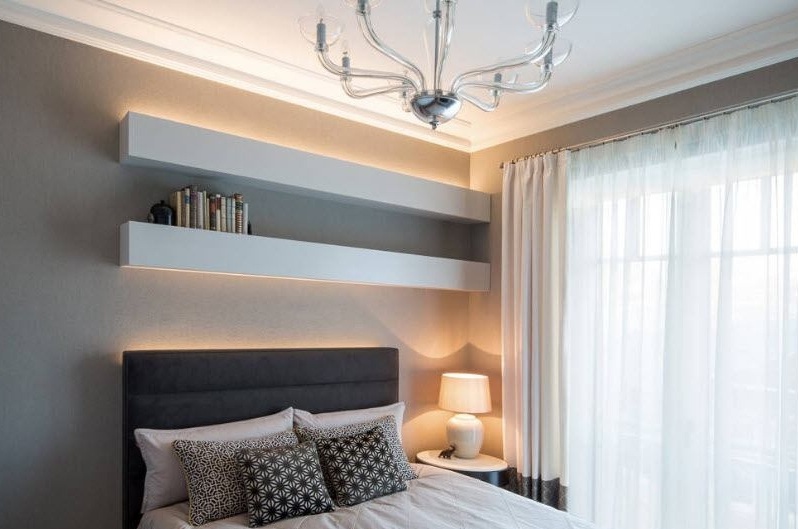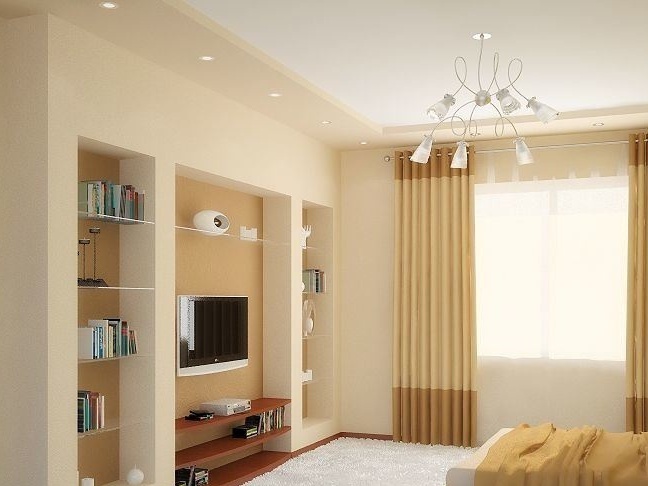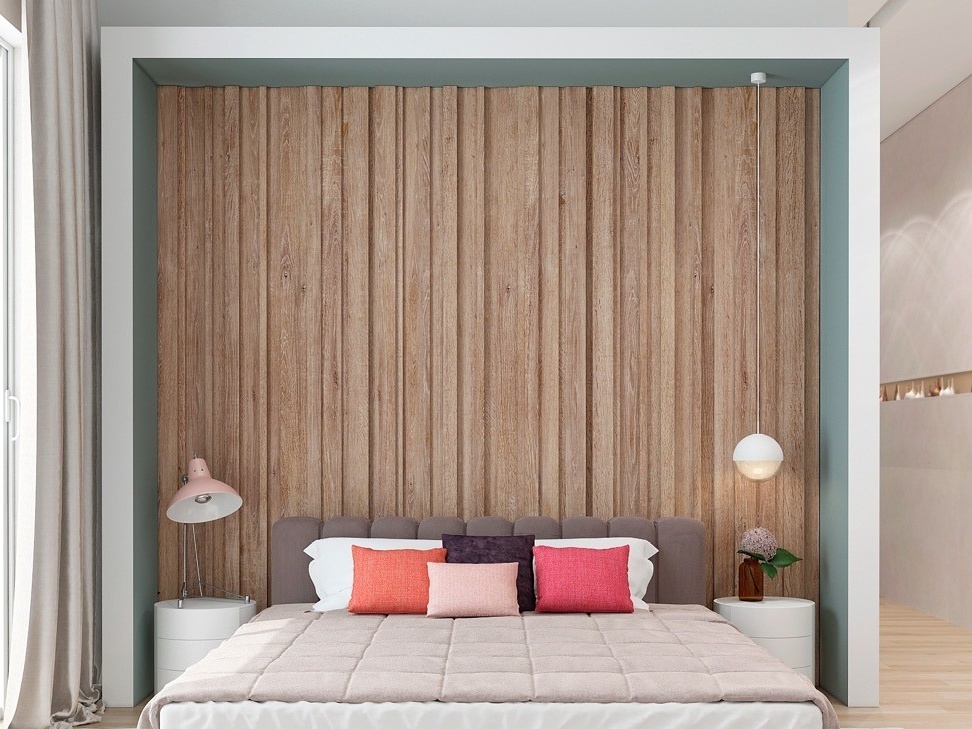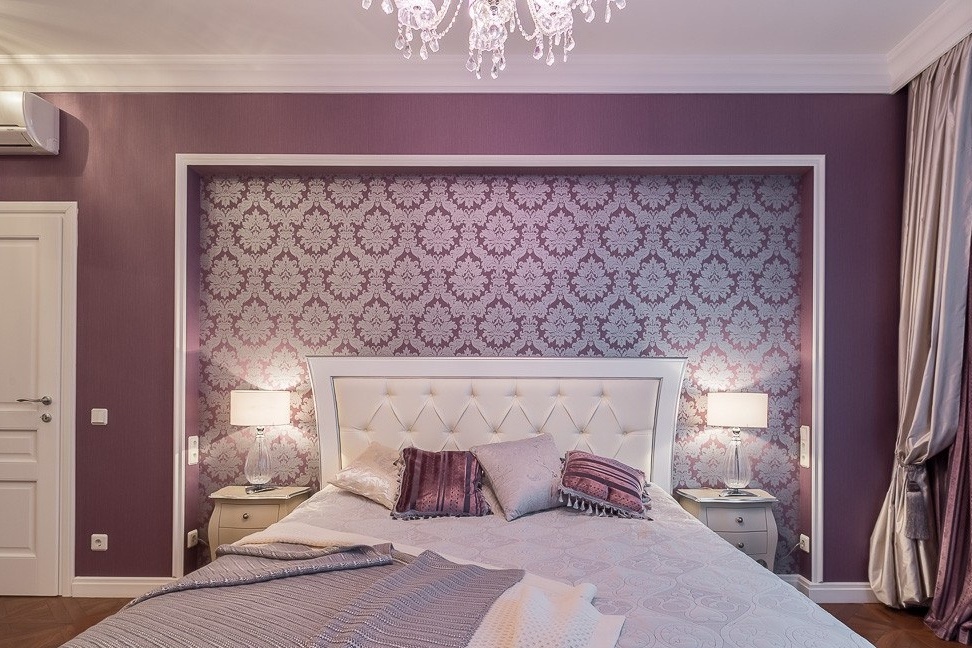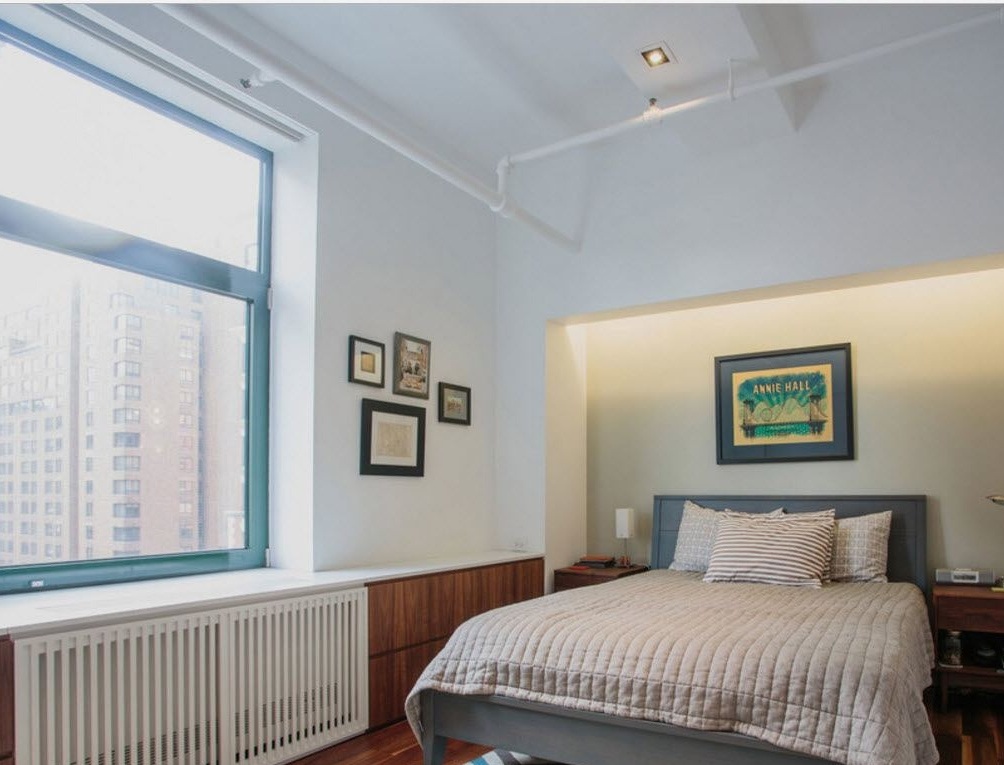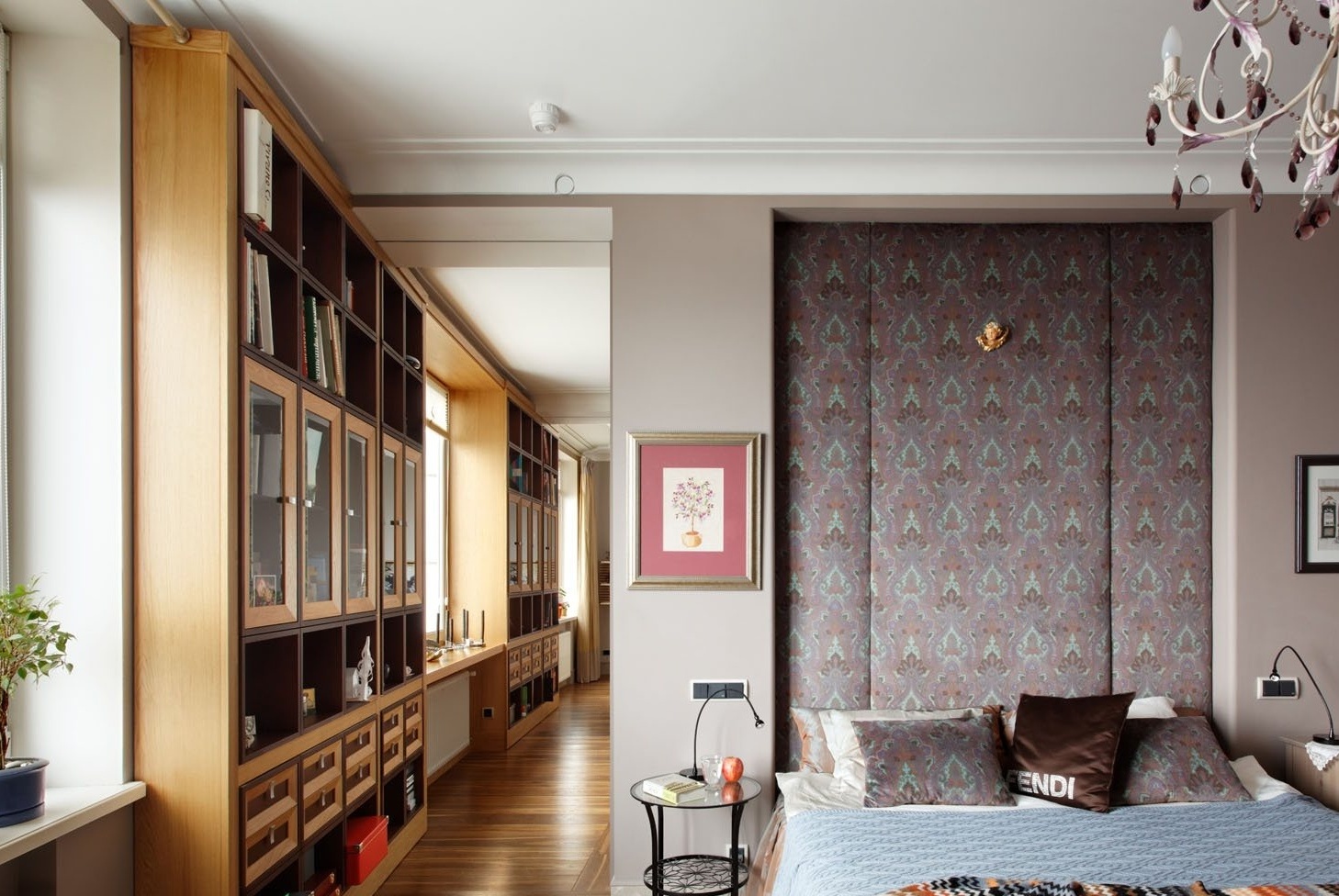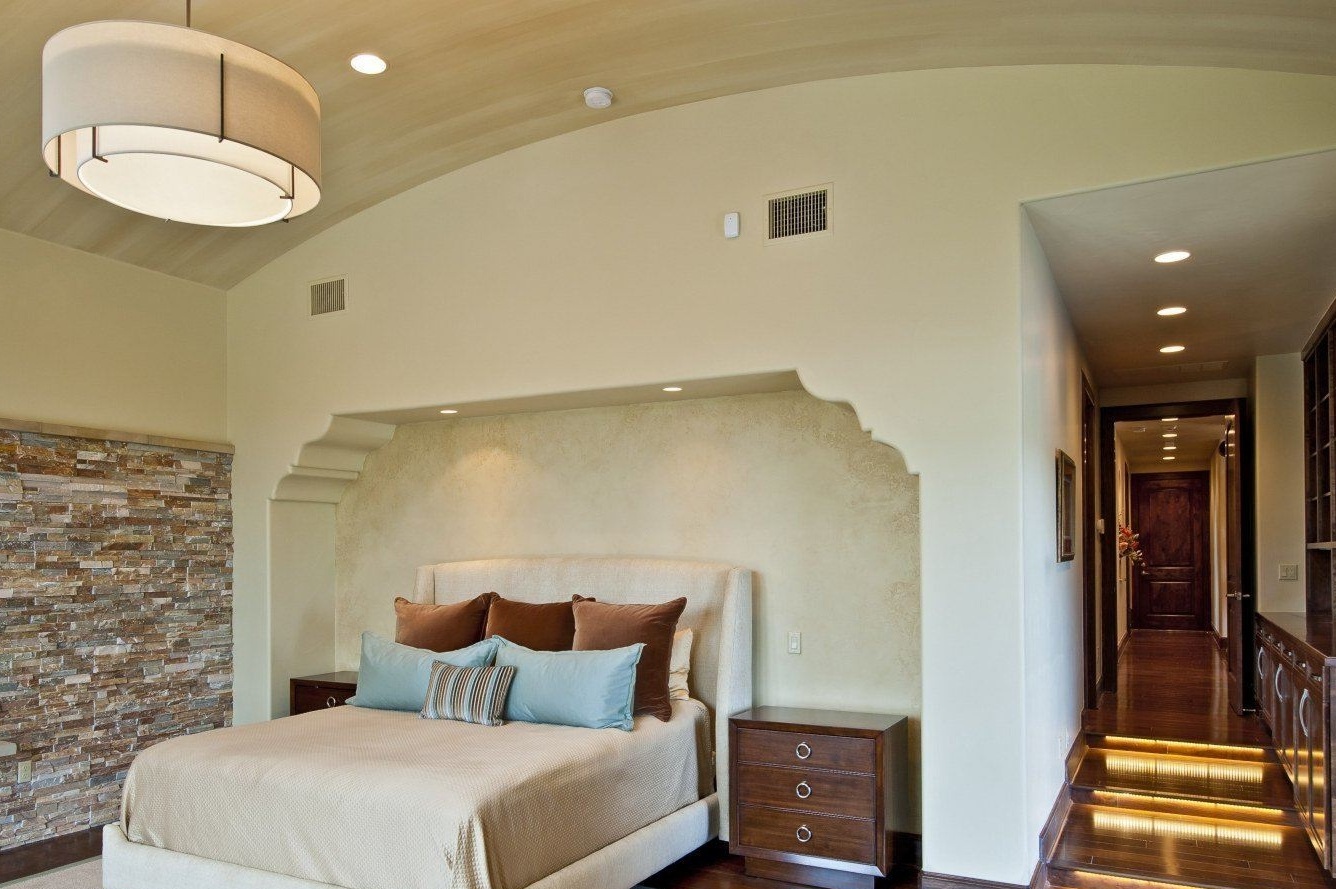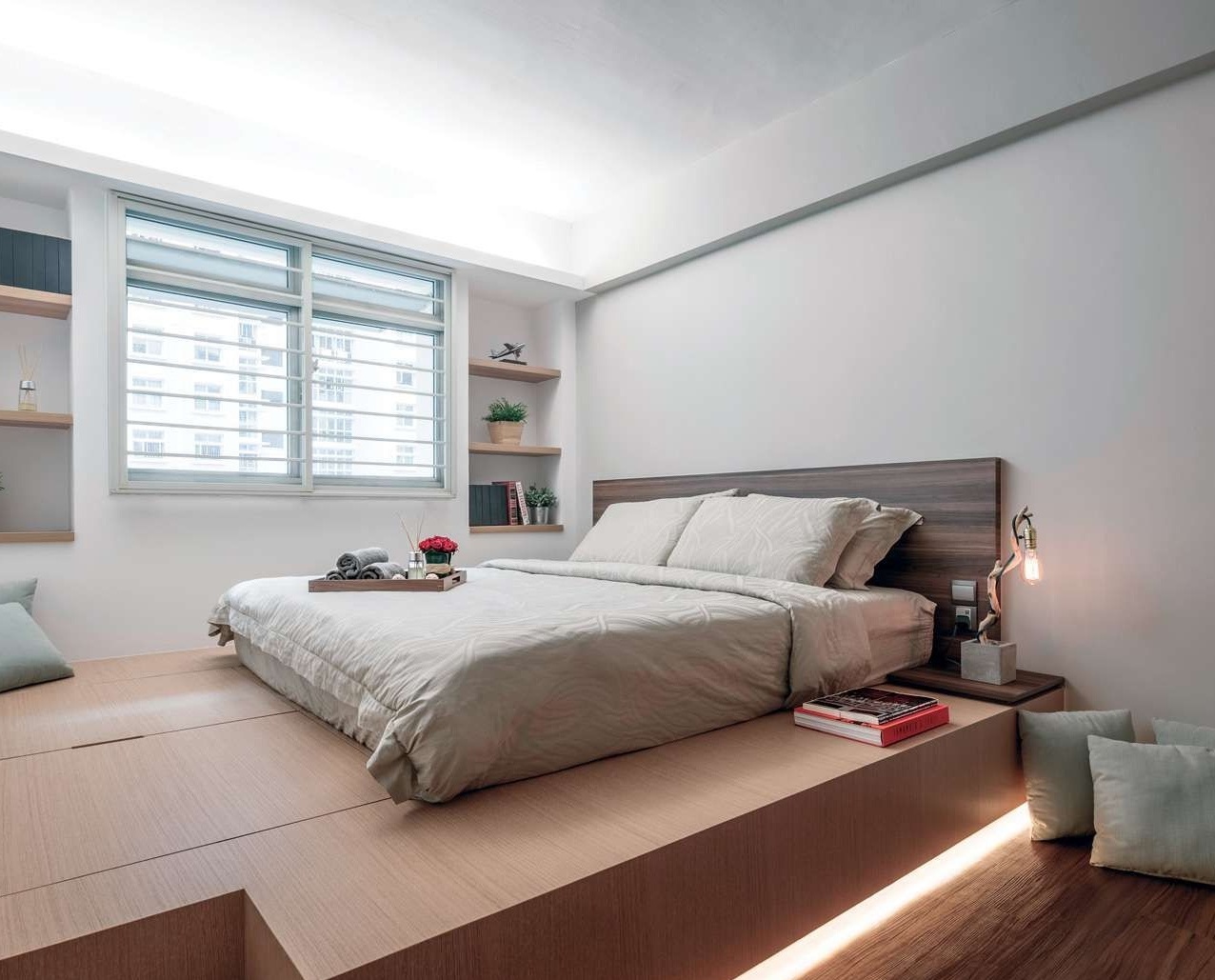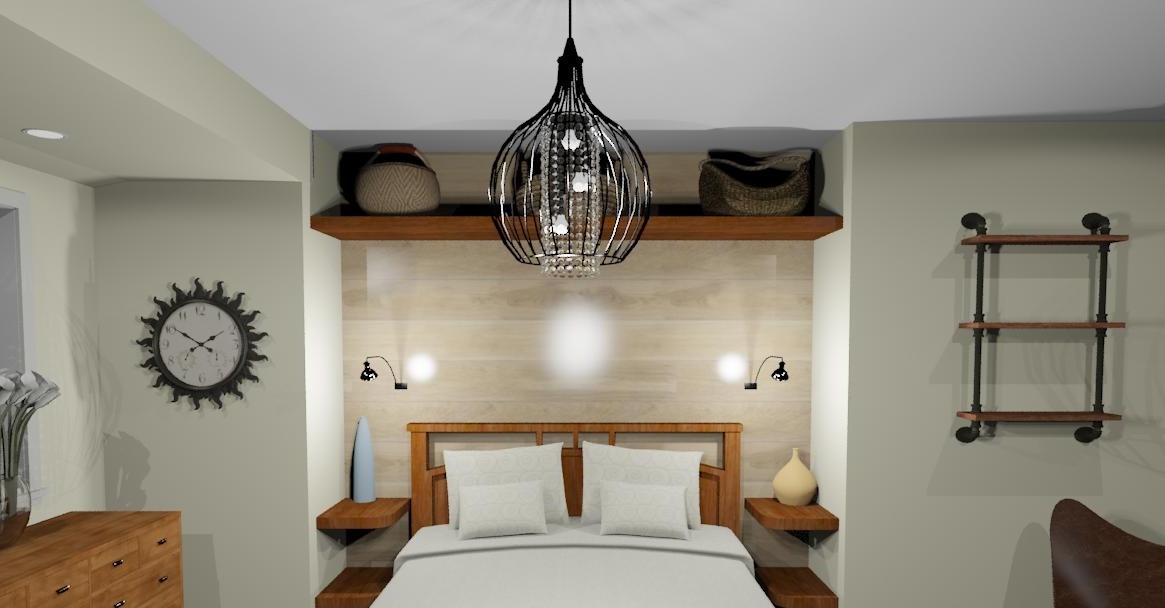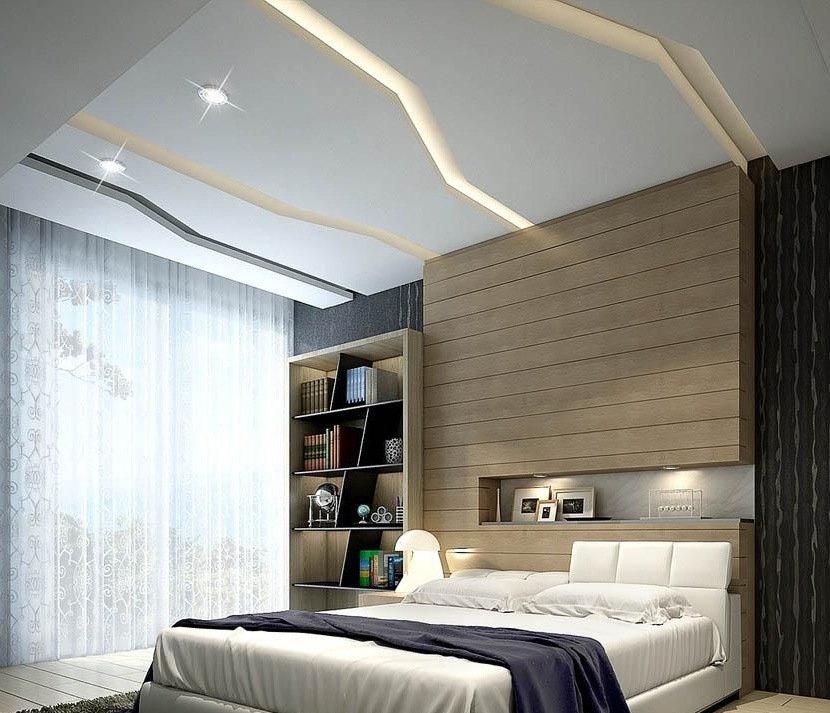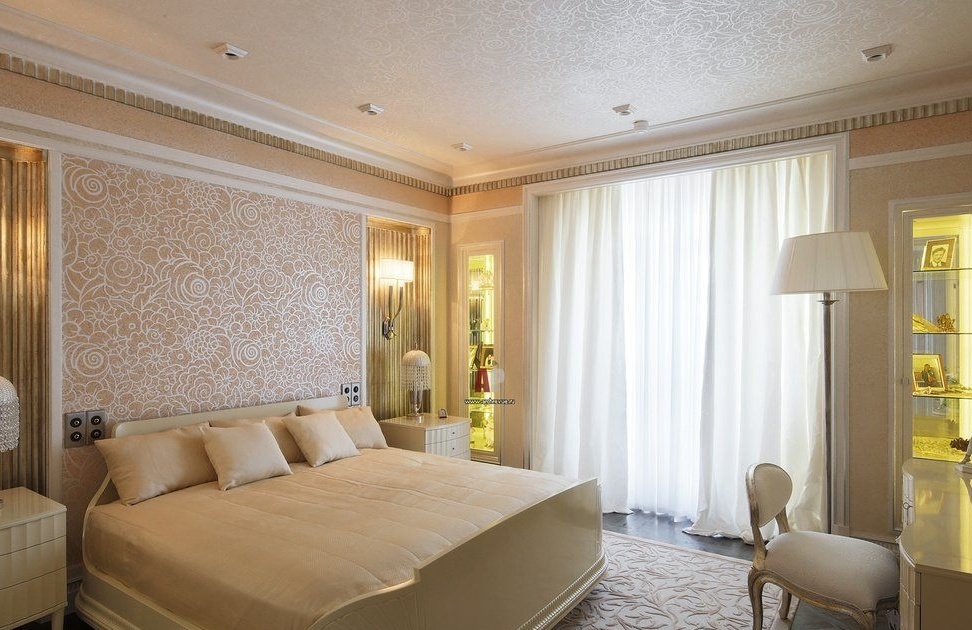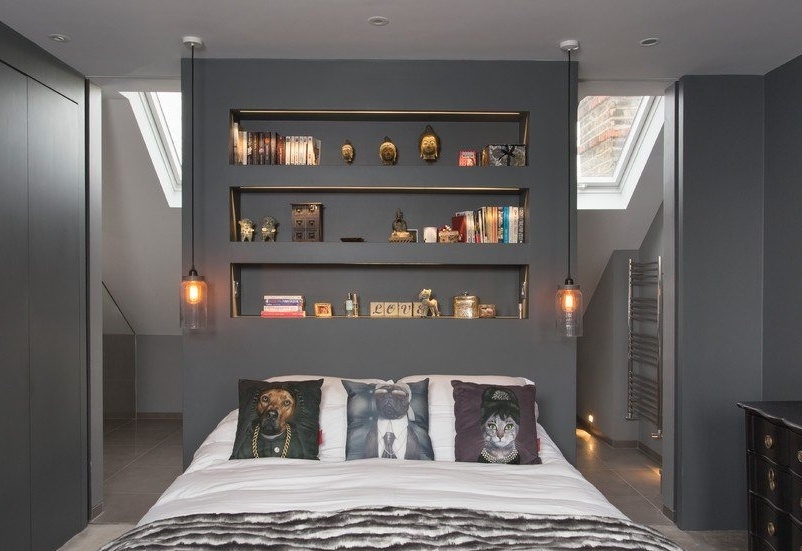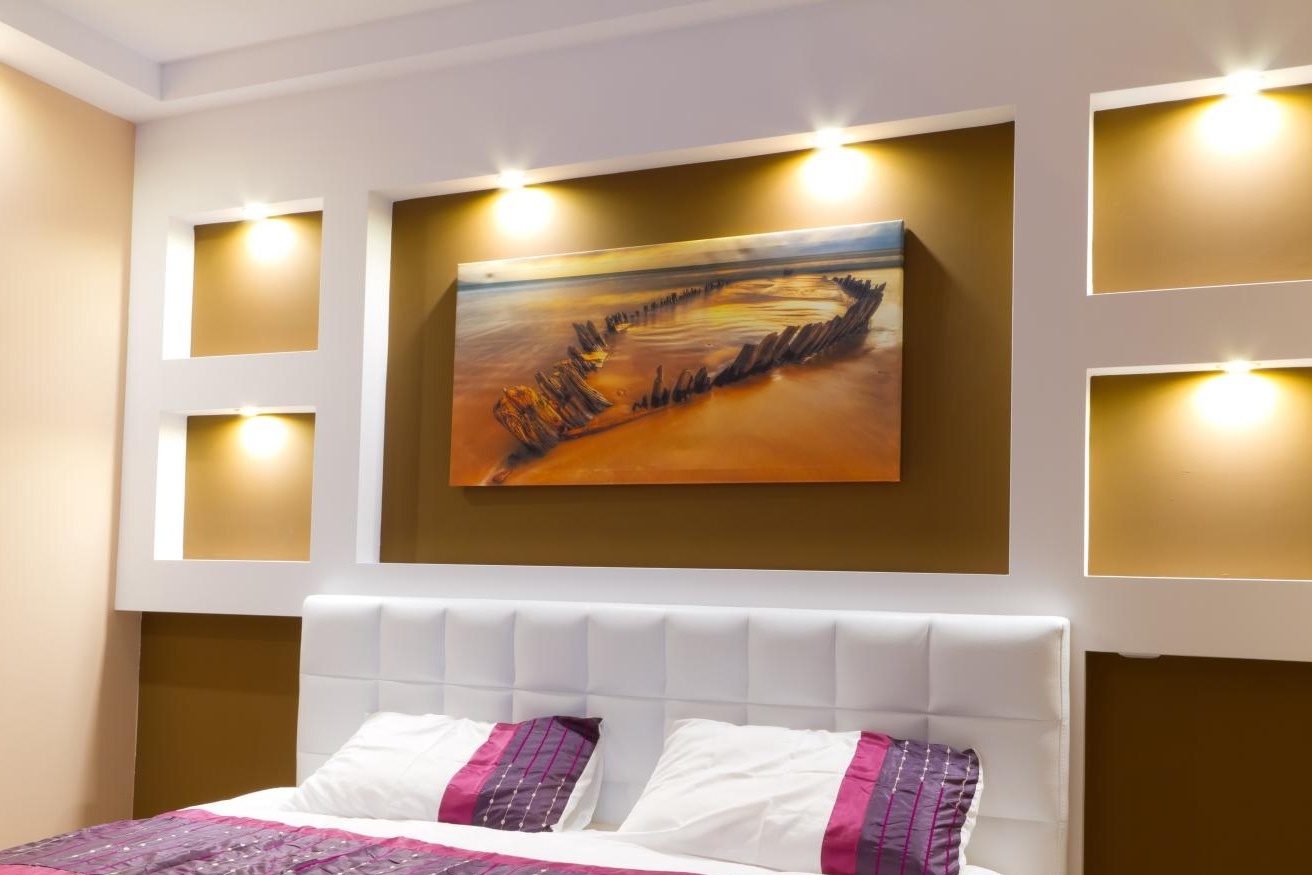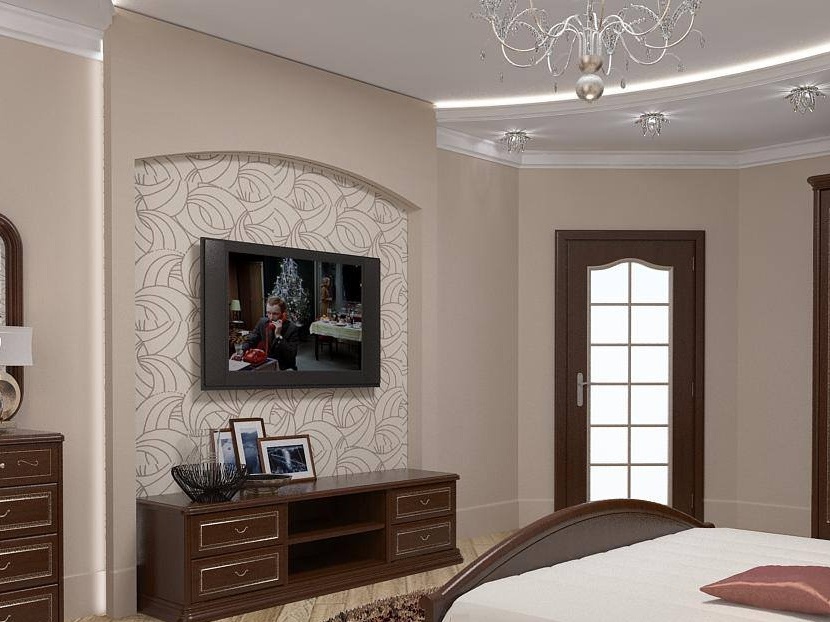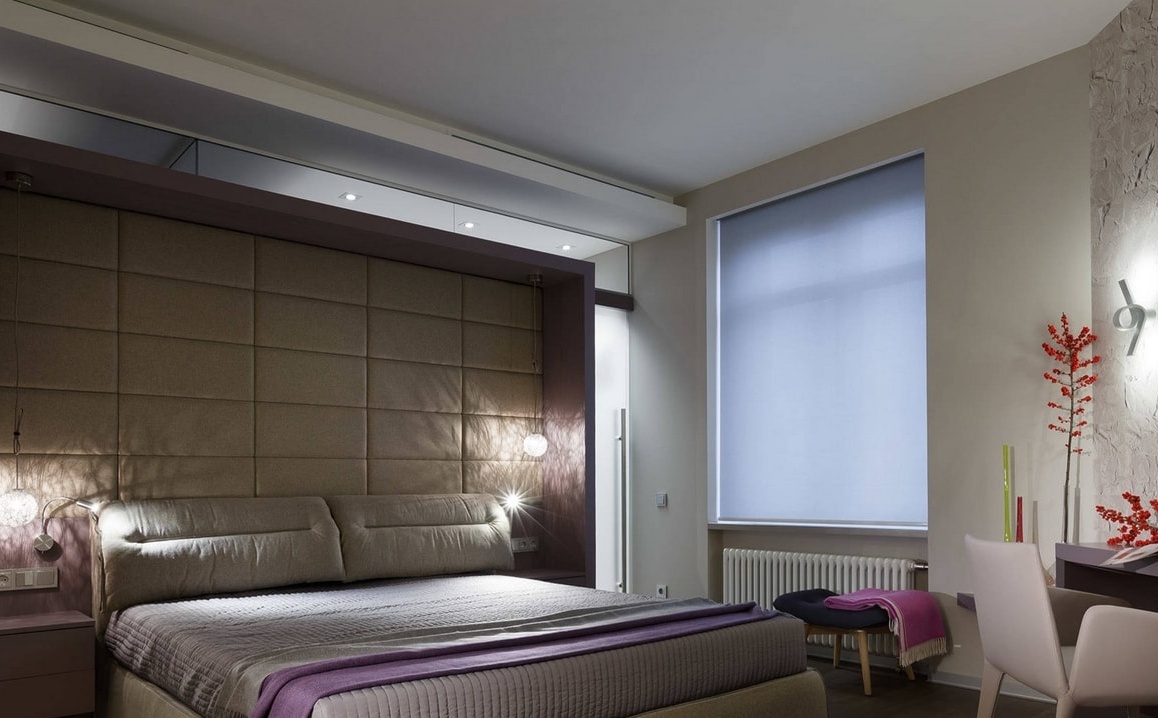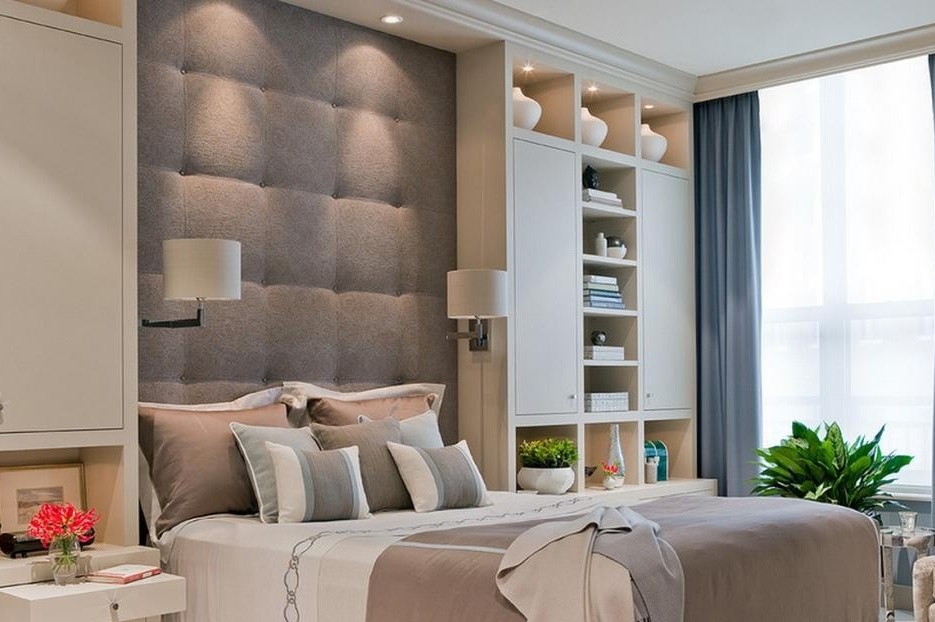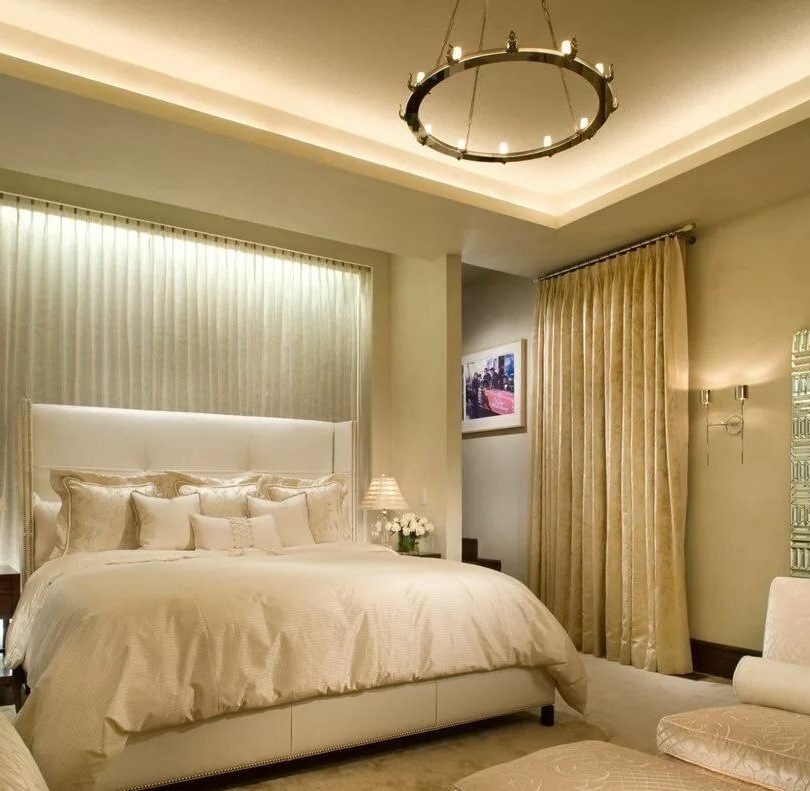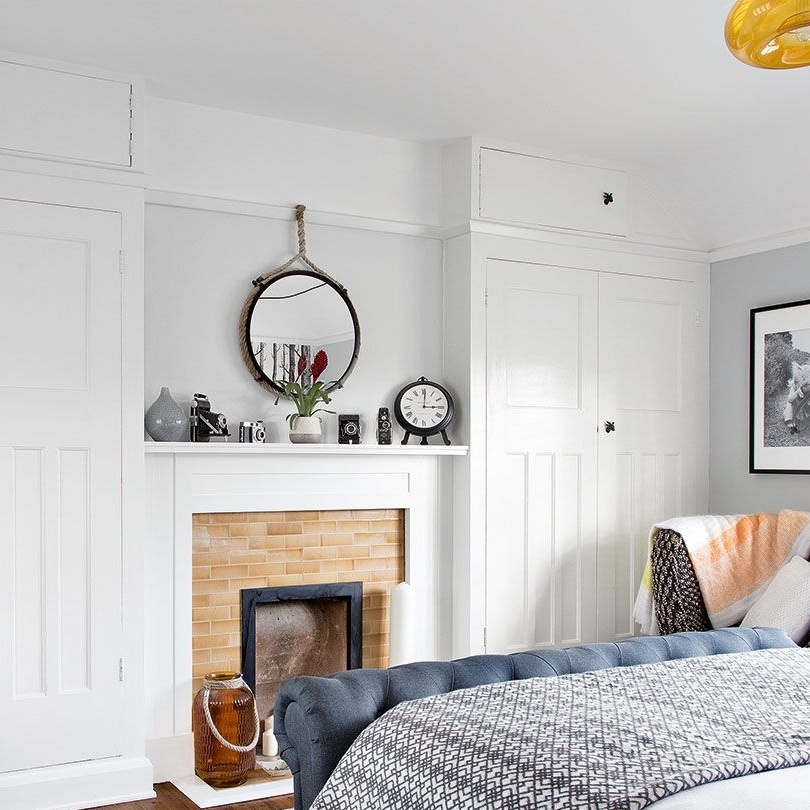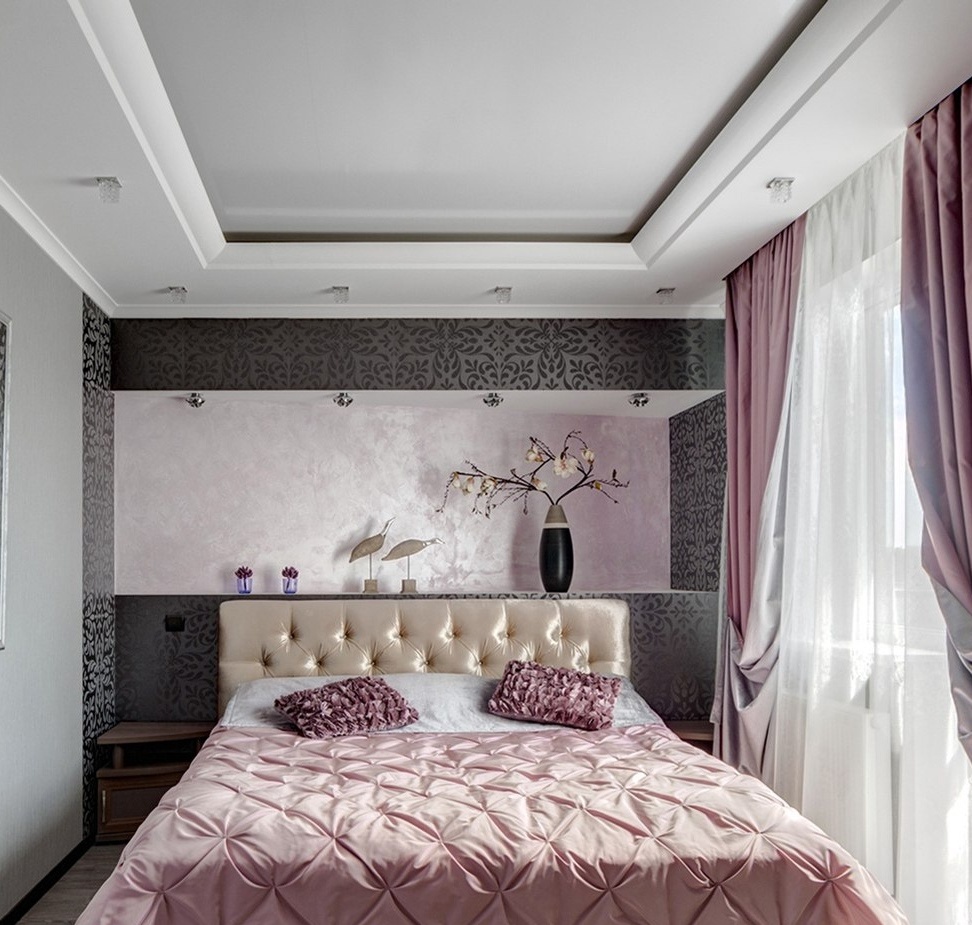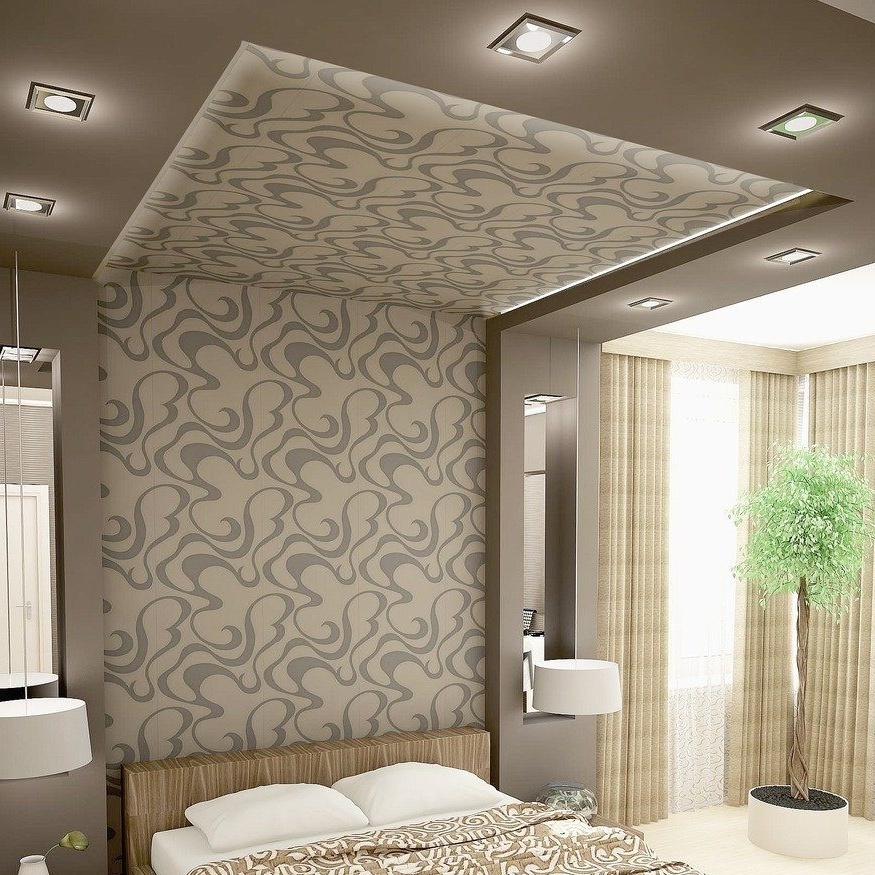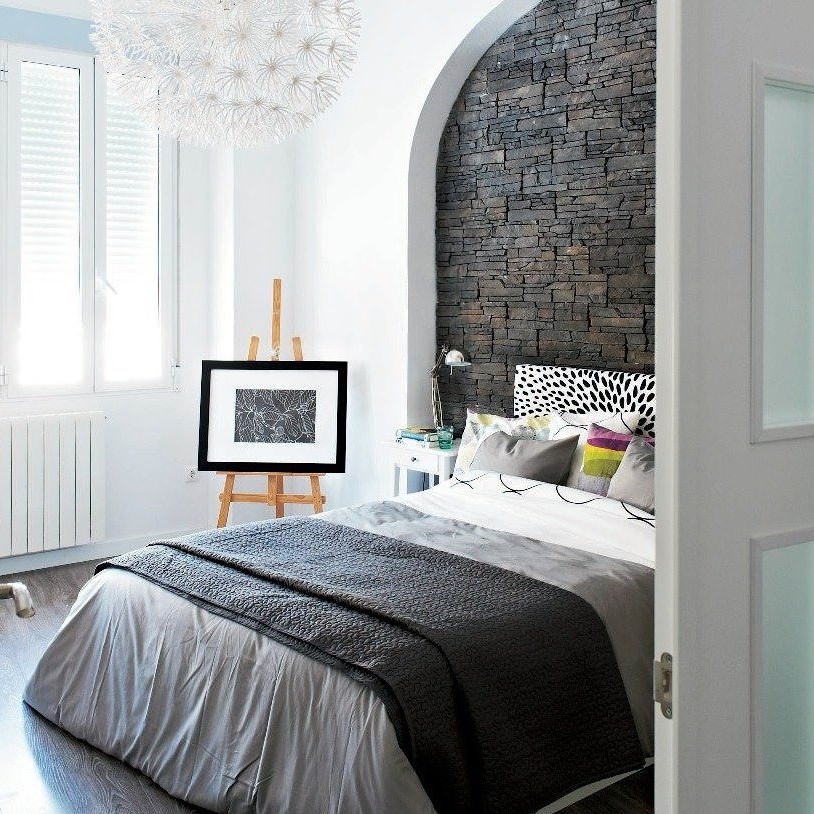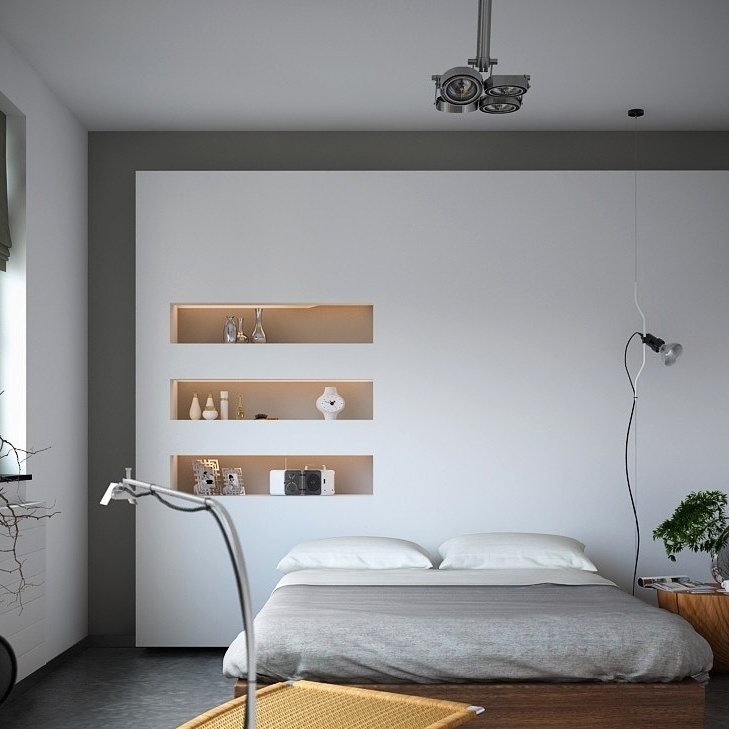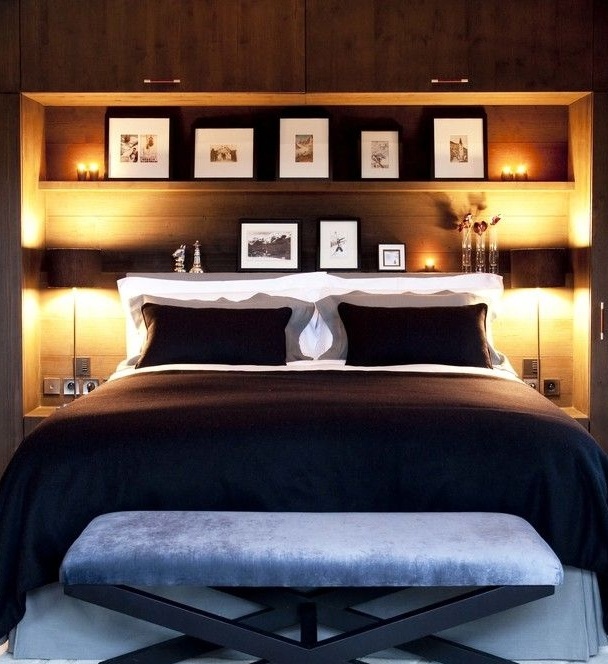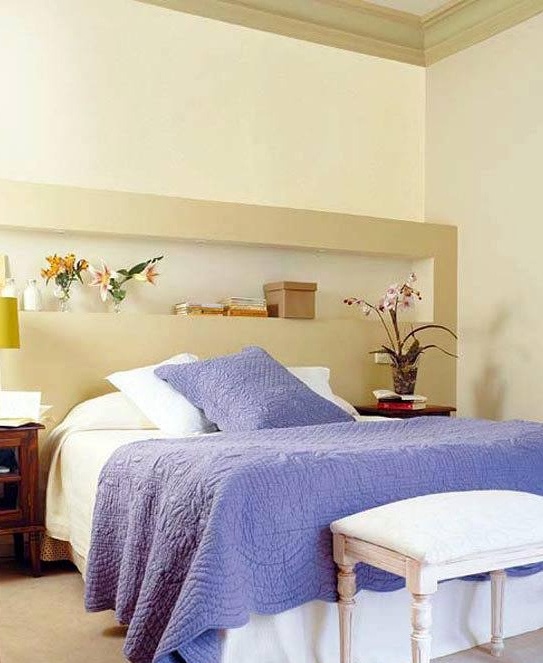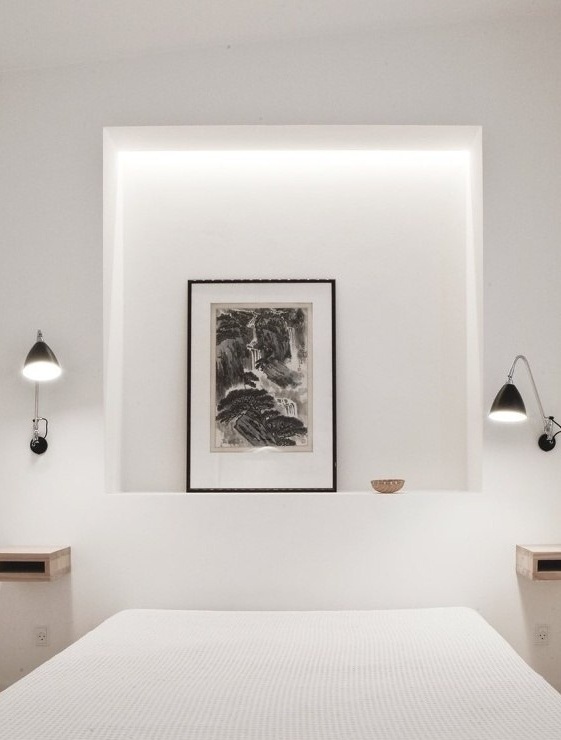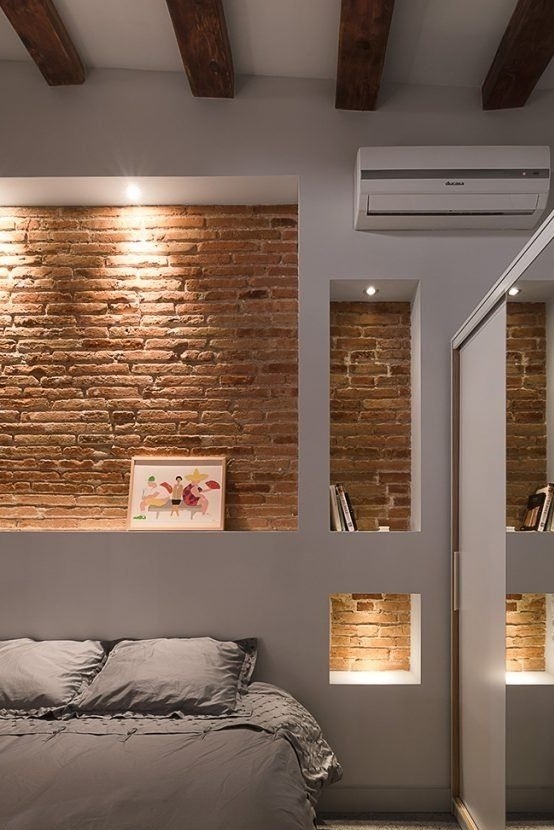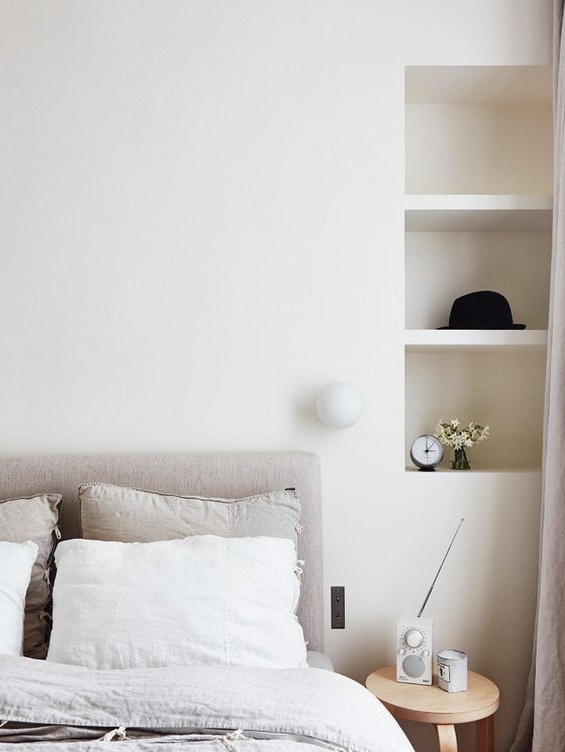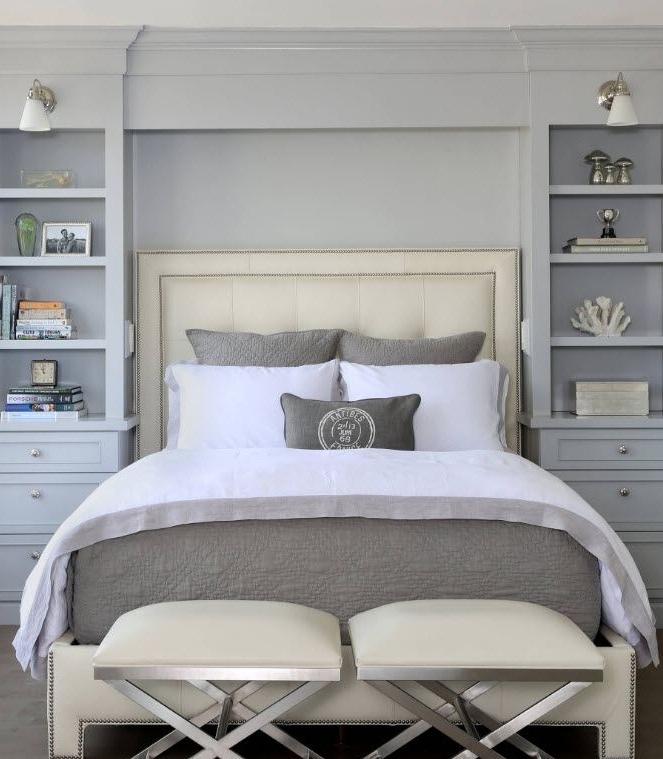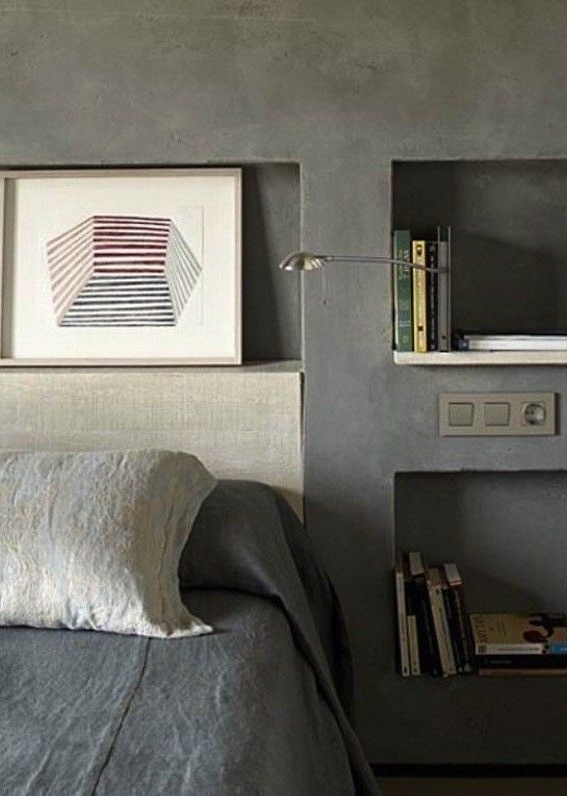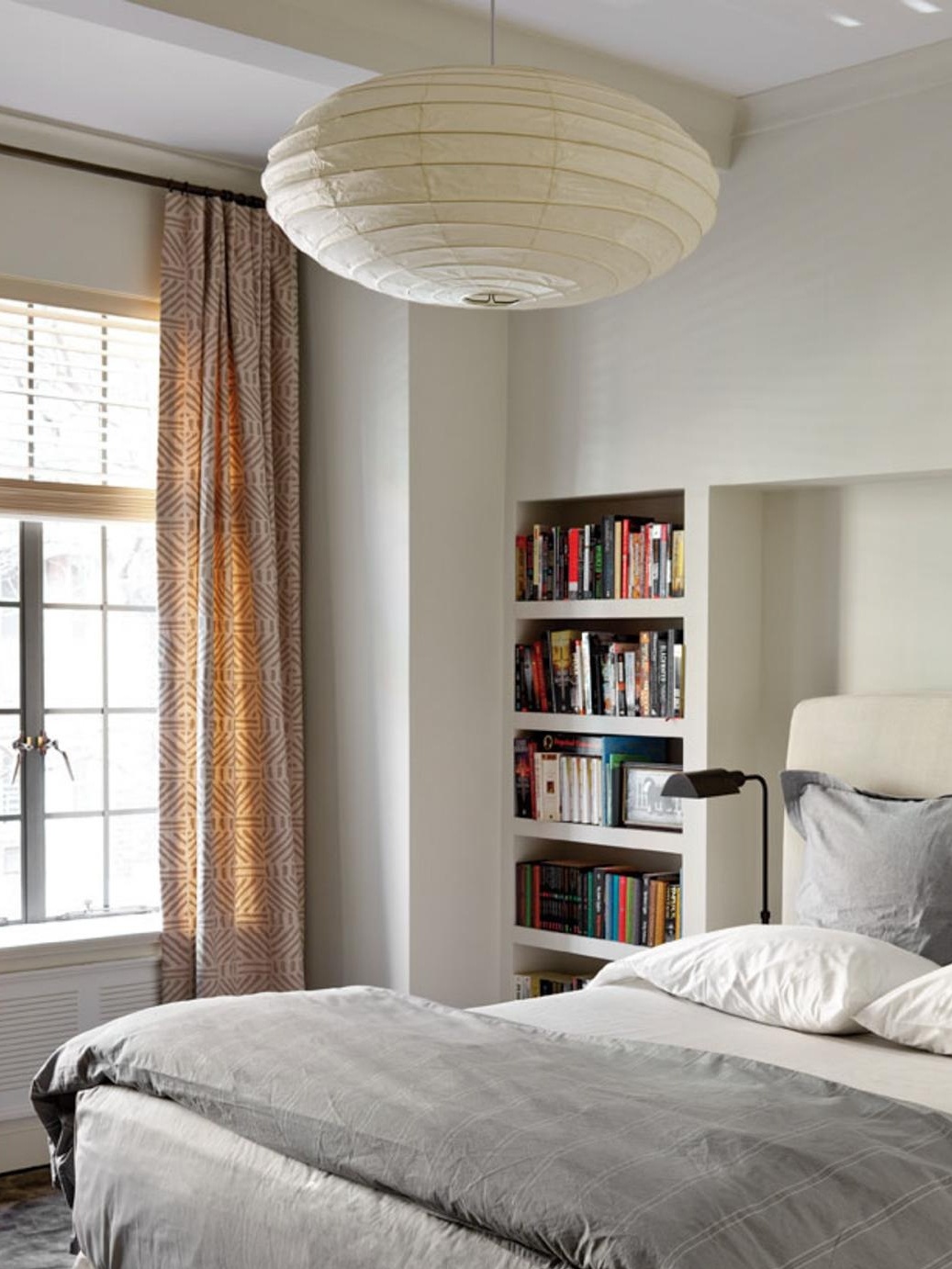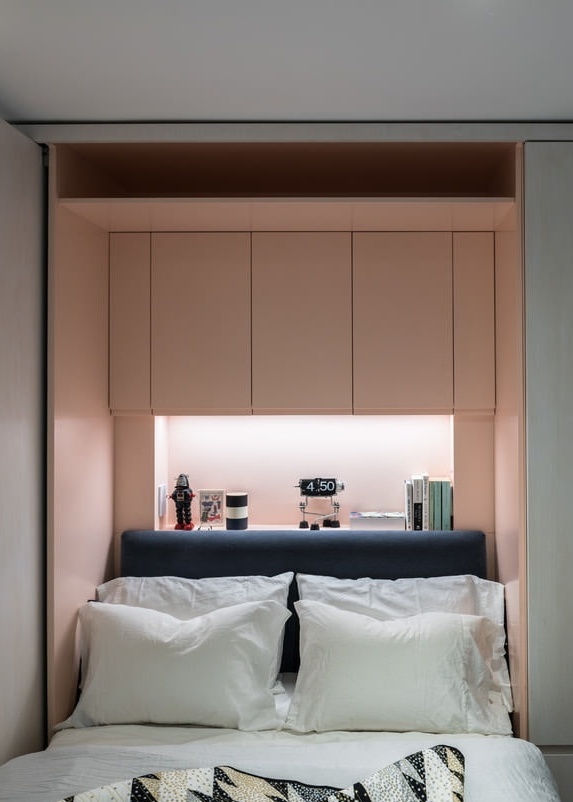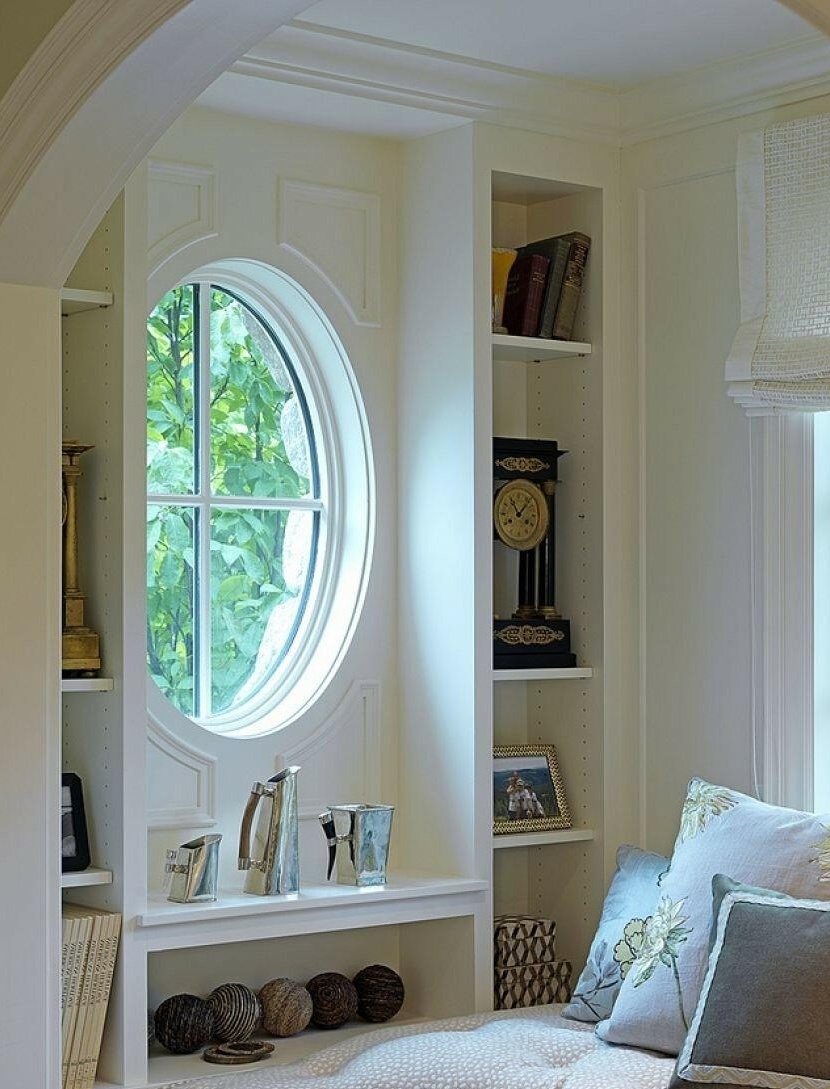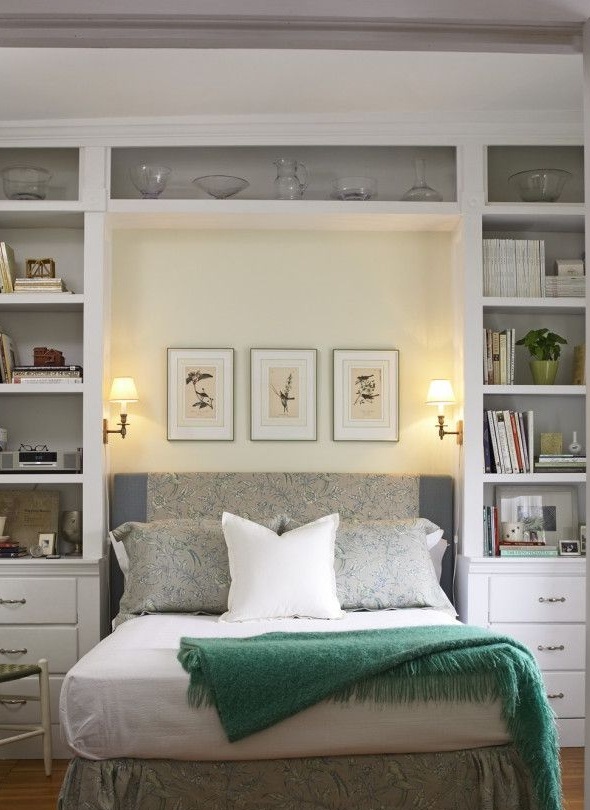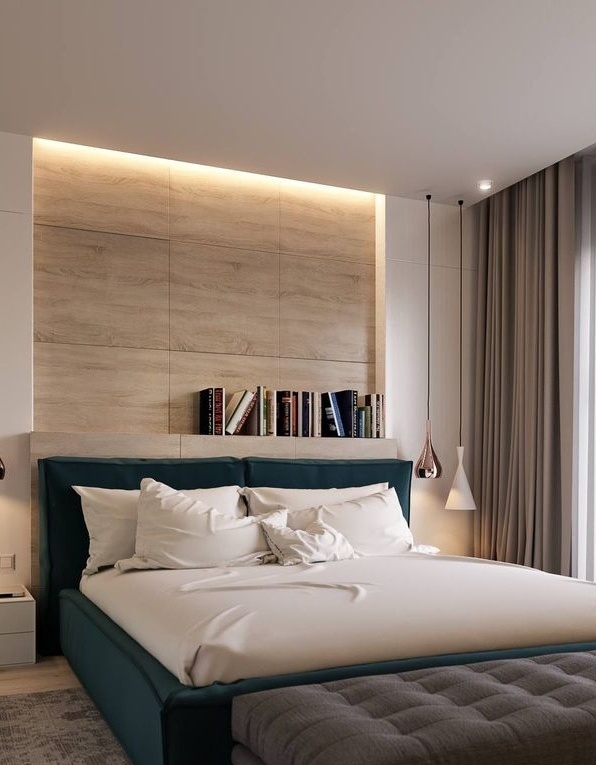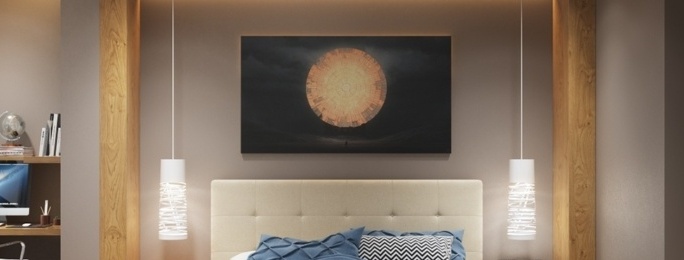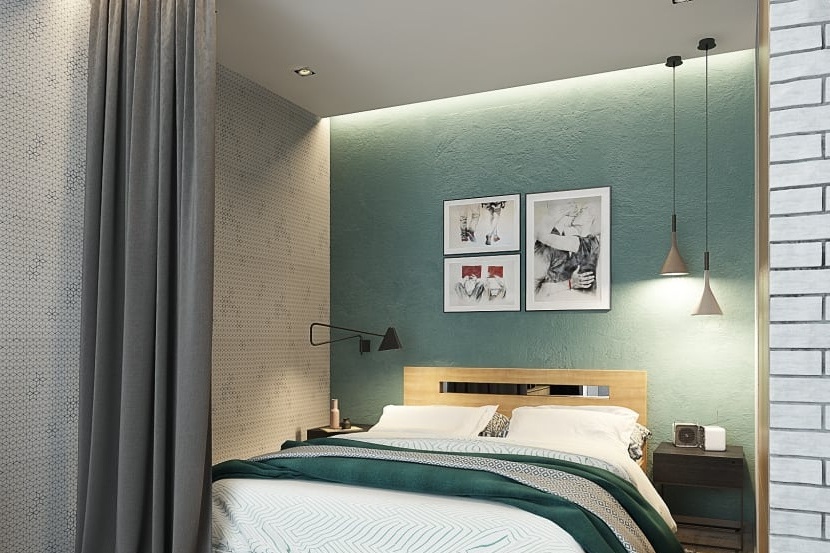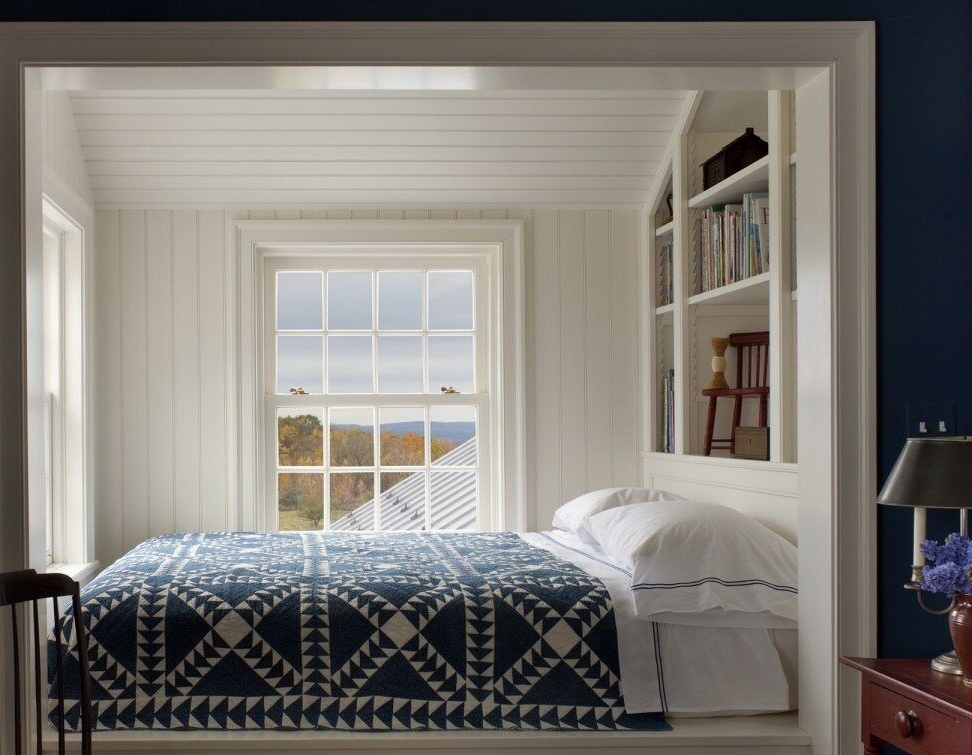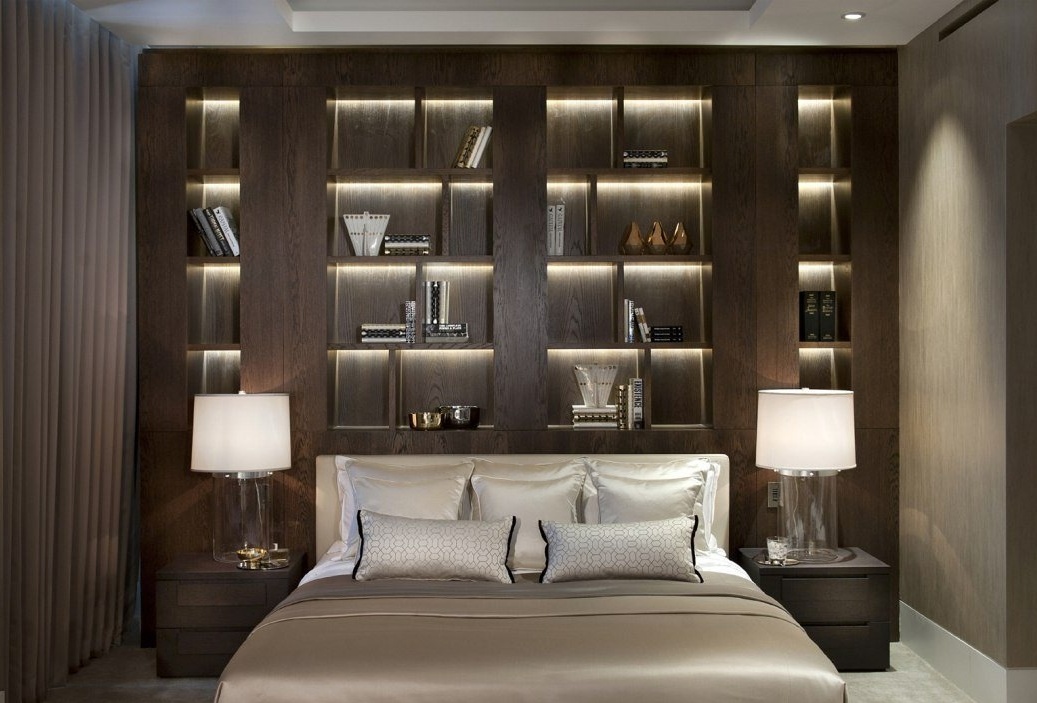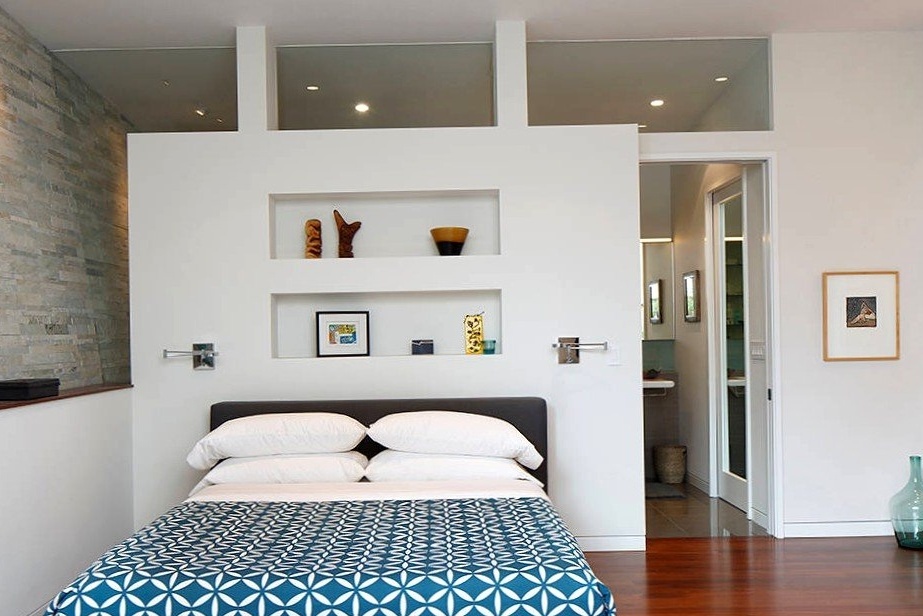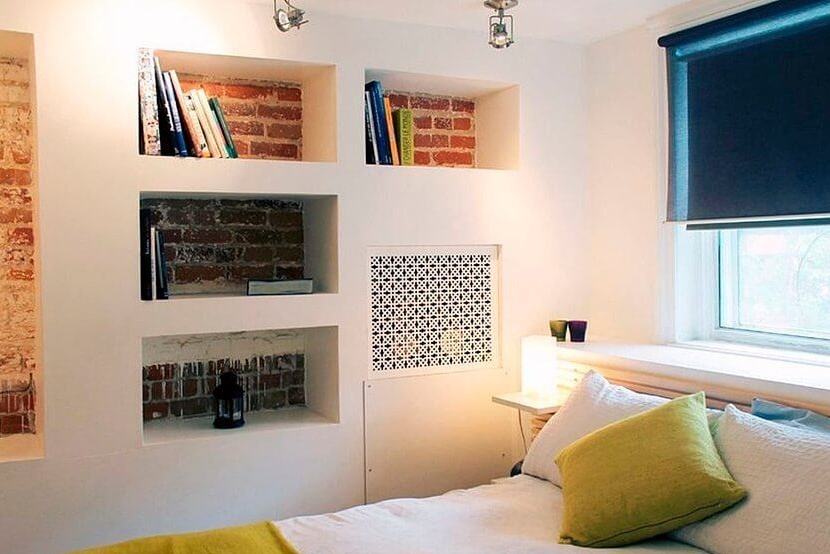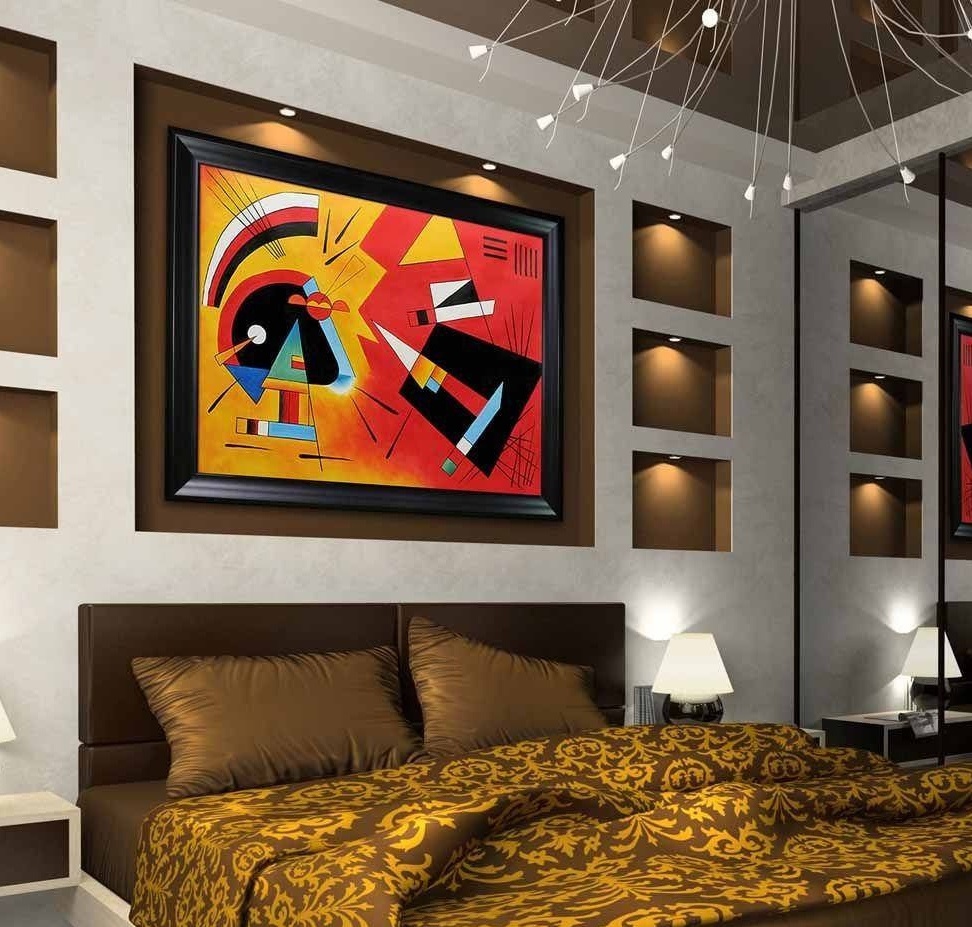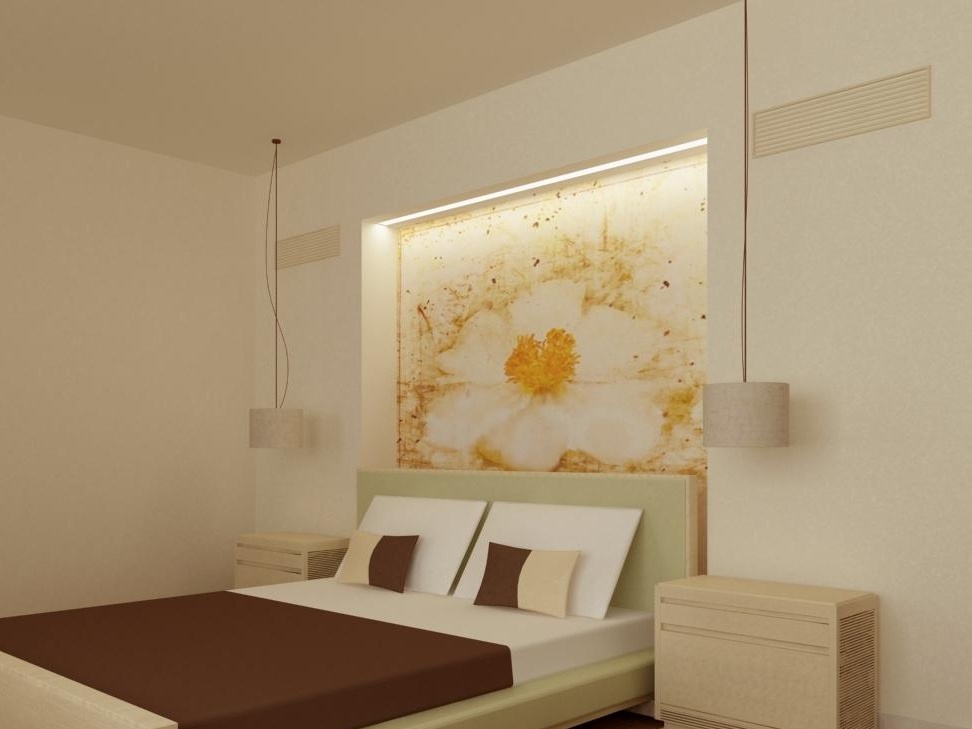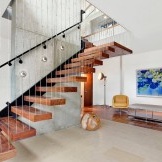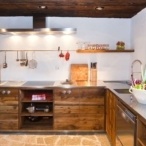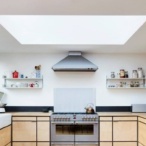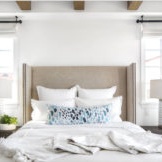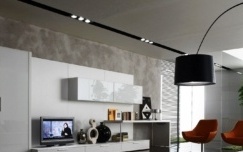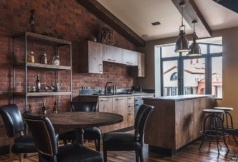Niche in the bedroom: design options in popular ideas
Content:
- Contemporary bedroom decor
- Types of Niches
- Examples of polyurethane foam
- For the bed
- For cabinet
- Choice of colors and finishes
- Lighting
Interiors can be arranged in various ways. The modern design of the rooms offers many ideas to help you set up your bedroom. In the photo gallery of this article you will find many original solutions with a distinctive design. One of them is niches in the bedroom, which help in an unconventional way to arrange the space.
Niche bedroom: photos of interiors in a modern design
Niches are decorative recesses in the wall of a geometric shape. Once they were used to place various types of statues and decorative objects in them, for example, with a religious accent. Nowadays, niches mainly have a decorative function, they can be an interesting place for flowers or comfortable little things. The recesses in the wall will look great against the background of exquisite arrangements. They will help you design your bedroom according to the classic canon of beauty and make it in an elegant tone. These are quite large decorative elements.
Types of Niches
By their purpose, niches are divided into decorative and functional. In the first form, objects, family photographs, vases, decorative dishes are most often placed. The biggest advantage of such a niche is the ability to change the decor. For example, the displayed vases are tired of you, so you can replace them with something else at any time. By design, you can place anything in a niche: small, plastic and glass objects, porcelain, even books and toys.
For large items, such as beds, wardrobes, niches are ideal at the floor level, that is, functional. Such a deepening of the interior can be located in the bedroom. Designers came to the conclusion that such recesses in the wall must be supplemented with other elements, for example, smaller niches nearby or a multi-level ceiling.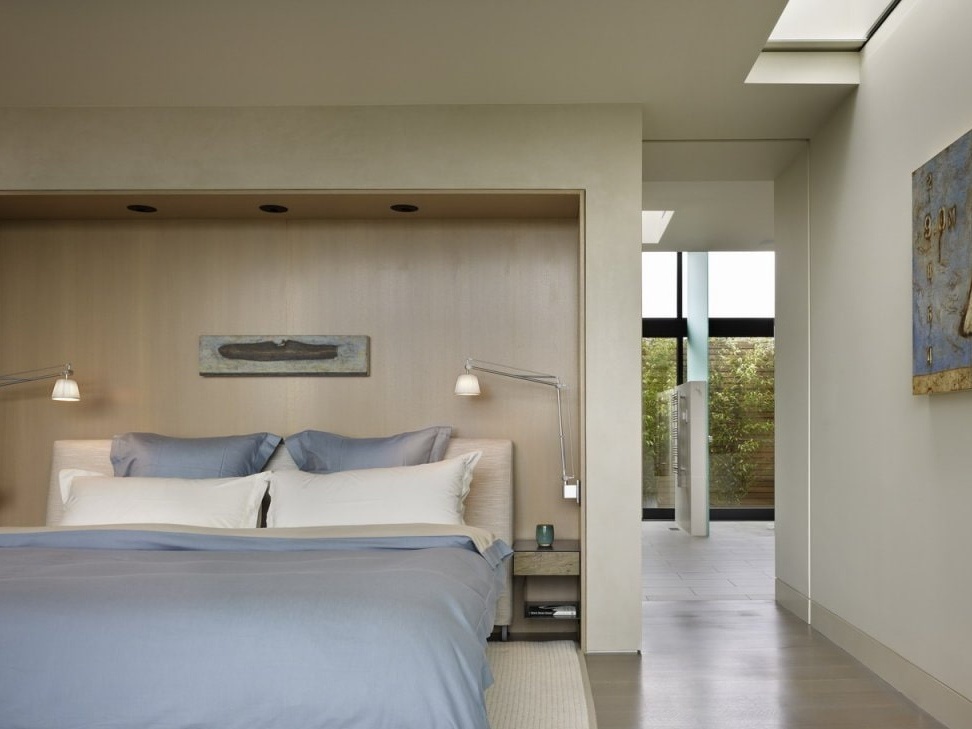
A stationary niche is one independent recess in a wall. However, you can create several such elements that are located at a certain distance from each other. Such niches must be in harmony with the type of decoration and decor of the bedroom.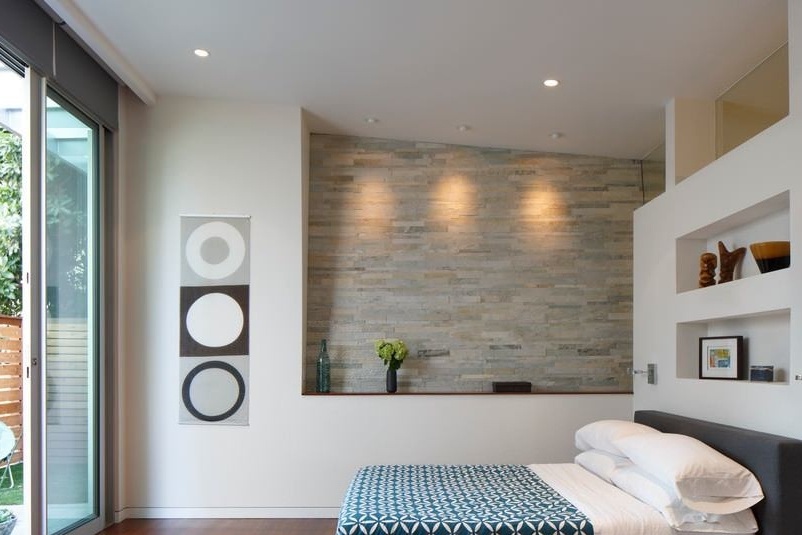
Niche under the bedroom made of polyurethane foam
In addition to aesthetic values, niches can be used rationally. They are often made of a very lightweight, damage-resistant material - polyurethane foam. A niche can fill the gap by beautifully decorating it. Neat decorative niches are suitable for painting in different colors. They are easy to install, so you can do it even yourself. Innovative production technology means that niches made of polyurethane foam are protected from moisture, so they can be installed even in the bathroom.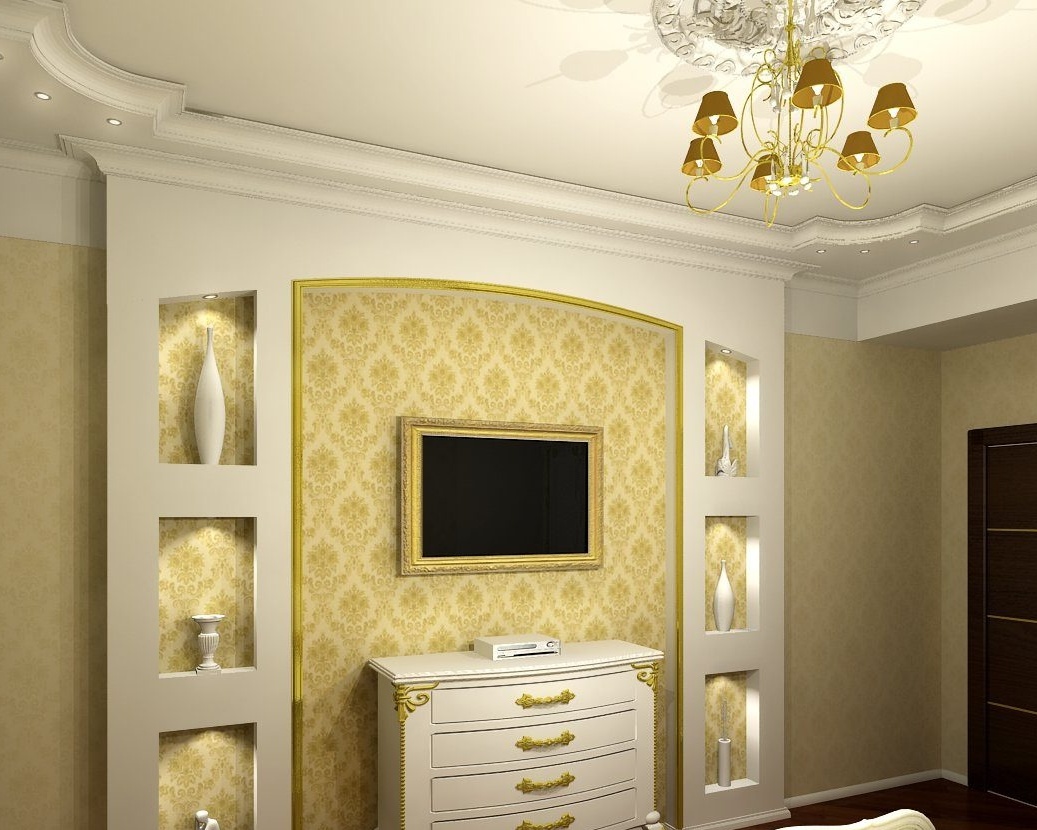
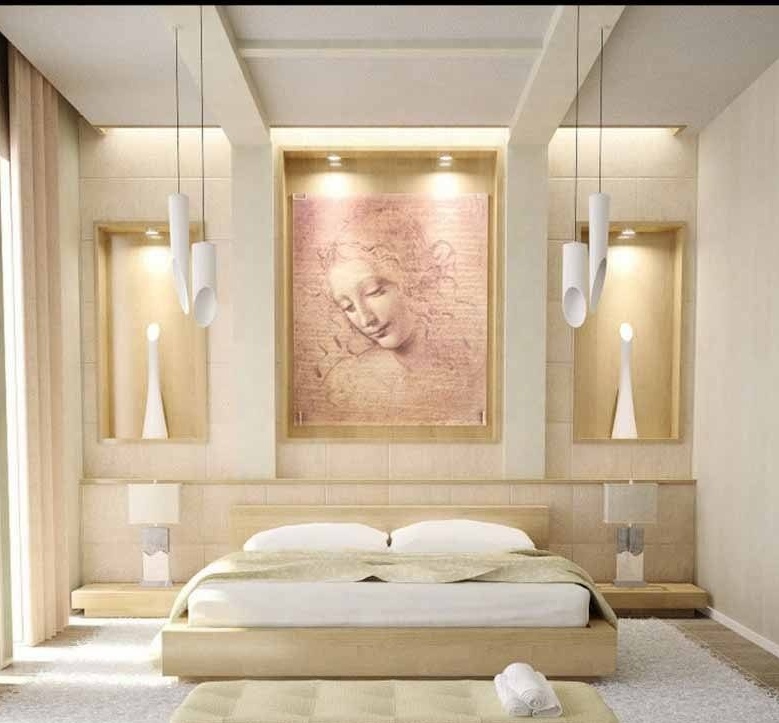
Niche in the bedroom for the bed
Functional niches are concavities designed for large objects. They can put a bookshelf, TV, various equipment, even a bed. Thus, it will be more comfortable to sleep, feeling in a fenced space. In such a niche, atmospheric light is often installed.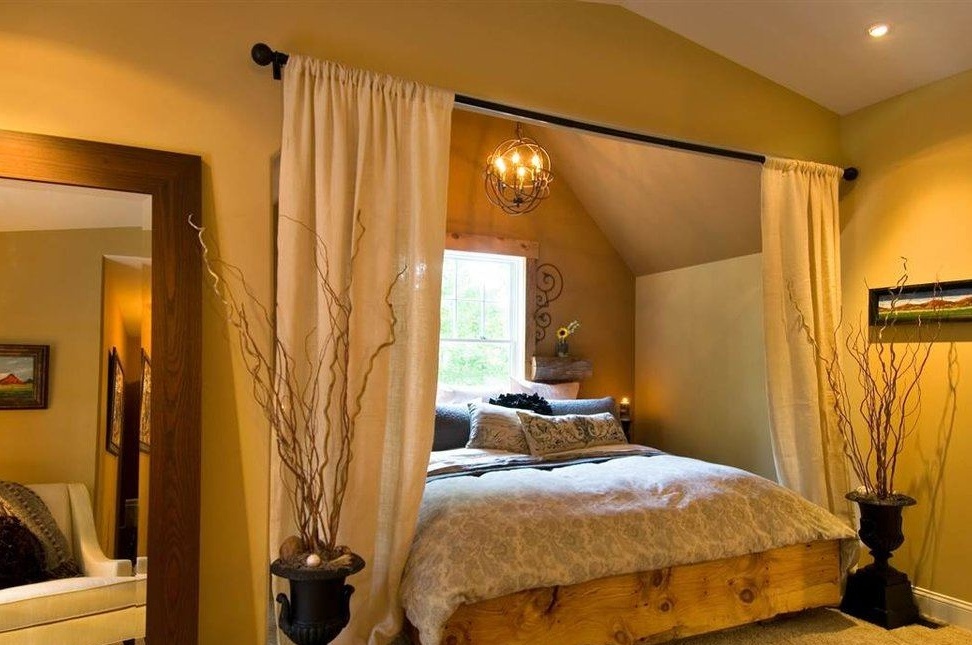
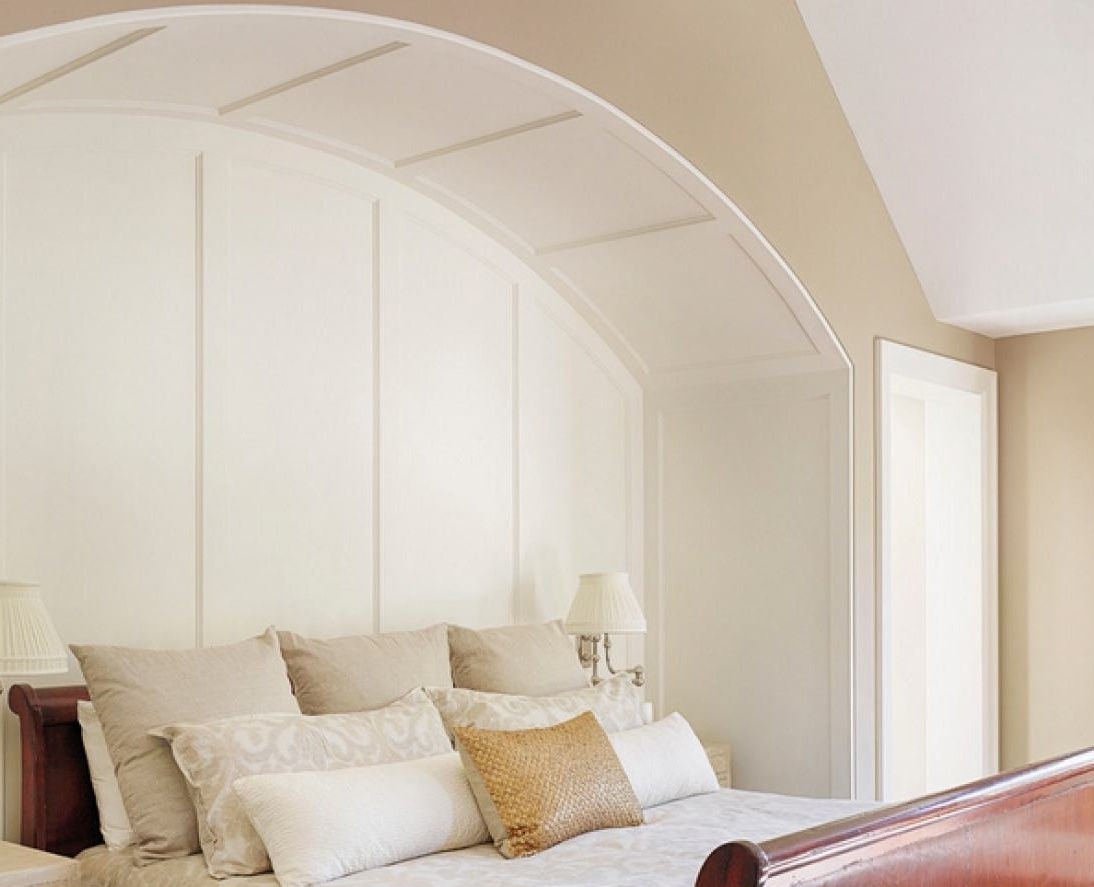
Almost every flaw in the layout of the rooms can be turned into an advantage. Even strange irregularities and protruding reinforced concrete compounds, which, moreover, are not uncommon in old-style apartments, in the hands of a good designer can turn into elegant decoration elements. Niches of various shapes and sizes are not only fashionable, but also practical to use in the bedroom for the bed.
Niche cabinet in the bedroom
Modern niches are far ahead of the primitive dents on the walls several decades ago, designed only to place artificial flowers in a vase.Currently, the term “niche” refers to a harmonious intimate space that includes individual color solutions and a thoughtful lighting system. You must decide which niche shape is best for your interior. For example, horizontal recesses will look great in a wall with pedestals, and vertical ones are ideal for a cabinet.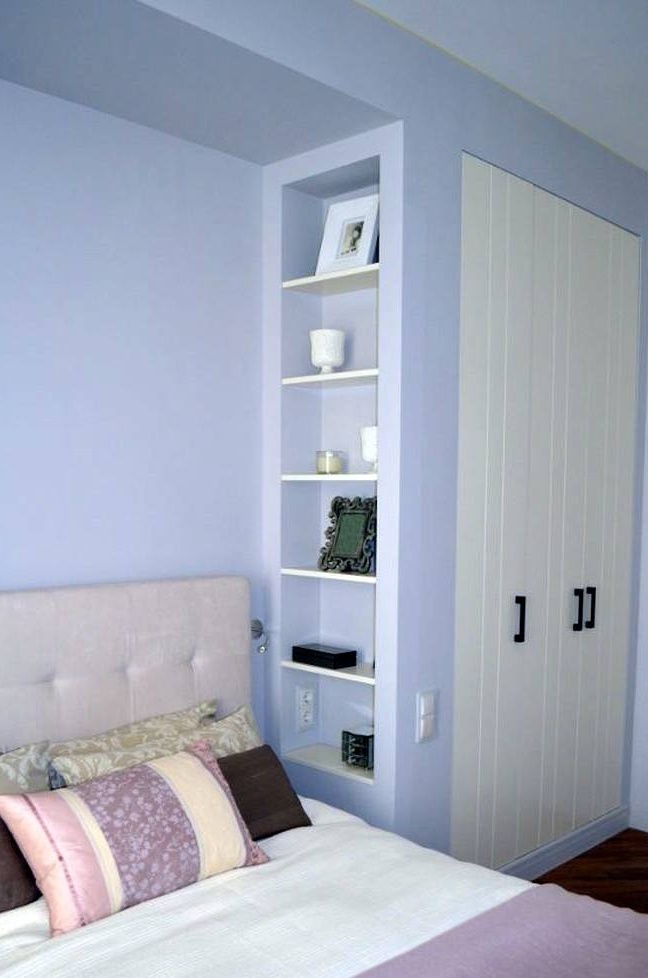
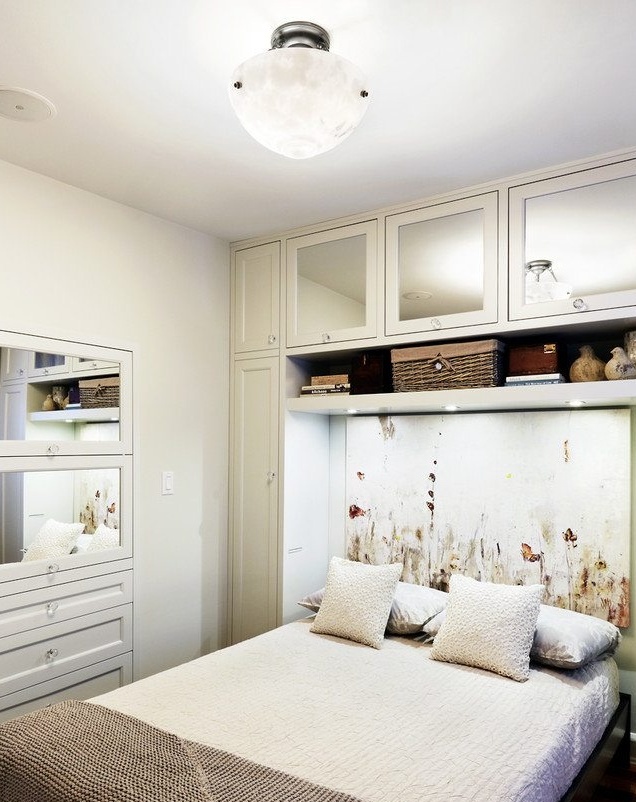
Niche under the bedroom: a choice of colors and finishes
There are two ways to solve a niche color - this is contrast or the selection of shades that are harmonious with the general gamut. In the "false" niche pastel shades or very bright look great. It is not recommended to paint the recesses in dark colors, because they will visually look like black holes.
Drywall niches in the bedroom and other materials
Theoretically, niches can be placed in any wall, but it is known that they are easier to make in drywall partitions than in brick or concrete walls.
To emphasize the shape of the wall in which the niche is decorated, you can combine different materials. Quite often for niche decoration use:
However, it should be remembered that decorative stone and brick are more suitable for public places (living room, dining room, library), while private spaces in the form of a bedroom, designed in this way, can look gloomy and rude. But it all depends on the style, so in the loft a niche can be left without decoration, especially when it is arranged in a stone wall.
Design a bedroom with a niche: a choice of lighting
Correct distribution and intensity of lighting in the bedroom gives the desired climate. Lighting can optically enlarge a room, give it a cozy atmosphere, or bring elegance and class to the interior. Lighting niches allow you to place lamps in the most interesting way. They can be mounted both on the wall and under the false ceiling. Consider lighting niches for a bedroom in various styles and forms thanks to which you can easily choose a suitable model.
Lighting niches are a great way to create an elegant interior and accent a certain element of a room. There are niches with rectangular and semicircular recesses. You can put any item in them if you want to highlight it in your interior.
If you do not have experience in finishing work, it is worth inviting specialists to this rather difficult job. If you want to create a niche that not only decorates the interior, but also becomes an indispensable and functional element of the bedroom, it is not enough just to take a metal profile from drywall and cut a hole of a certain shape. Installing a niche, like any other construction solution, requires correct calculations, it is very important to take into account all the necessary distances at the beginning, to calculate the amount of finishing materials so that after finishing work you will not get concavity in the wall where nothing is placed.

